The pipemakers' workshop of Heptenstal, a pre-industrial company
Author:
Don Duco
Original Title:
De pijpmakerij van Heptenstal, een pre-industrieel bedrijf
Publication Year:
1992
Publisher:
Pijpenkabinet Foundation
Description:
An Englishman in Amsterdam becomes a pipe maker and starts his own workshop in the Jordaan. Later he is a potter and ends up owning a large pottery workshop for a simple product. At the same time, he continues to work as a pipe maker.
In general, the history of seventeenth-century pipe makers is left with little more than names in the archive so that it is nowadays not easy to give a sketch of the lifecycle of these craftsmen. In a positive case, more information can be found about a person and usually it is about someone who has performed higher on the social ladder. Such a person is the Amsterdam pipe maker and potter Willem Hendriksz. Heptenstal. He was already listed in my 1981 publication,[1] but since then more information came to light, including a series of pipes so that an article dedicated to his life and work is justified.
The start as a pipe maker
Like many early Dutch pipe makers, the person in this article came from England and settled in or shortly before 1625 in welcoming Holland. Traditionally, the names of these people were written down phonetically and that is why it is not always easy to link the right information. As first names we see William Hendrecson and Willem Hendricksz., in both languages in an infinite series of spelling varieties, whether or not in combination with his surname. This family name is rather unusual in Holland and is spelled as Heijtingstall, Hypenstall, Heptenstall, Hebtingstaet but probably Heptenstal is the most correct writing. It is unclear where this family name comes from, but it seems most probable that Willem Hendricksz. adopted this surname in Amsterdam.
William Hendrecson was born in the town of Stoke around 1599. It is tempting to think that this place refers to Stoke on Trend in central England, a potters' centre, but it is equally possible that a town south-west of London is meant. The earliest record in the Amsterdam archive dates from 1626.[2] William Hendrecson is then a tin smith by profession and lives in the Amsterdam Paardenstraat, a small street just off the River Amstel right in the city centre. In the same year he married Prudentia Thomas, an English girl. Their marriage does not last long, presumably she died in childbirth. In 1630 he married again, now with Aetie Barents.[3] William has since moved and is now renting a house on the Rozengracht. As a profession tin smith is still mentioned.
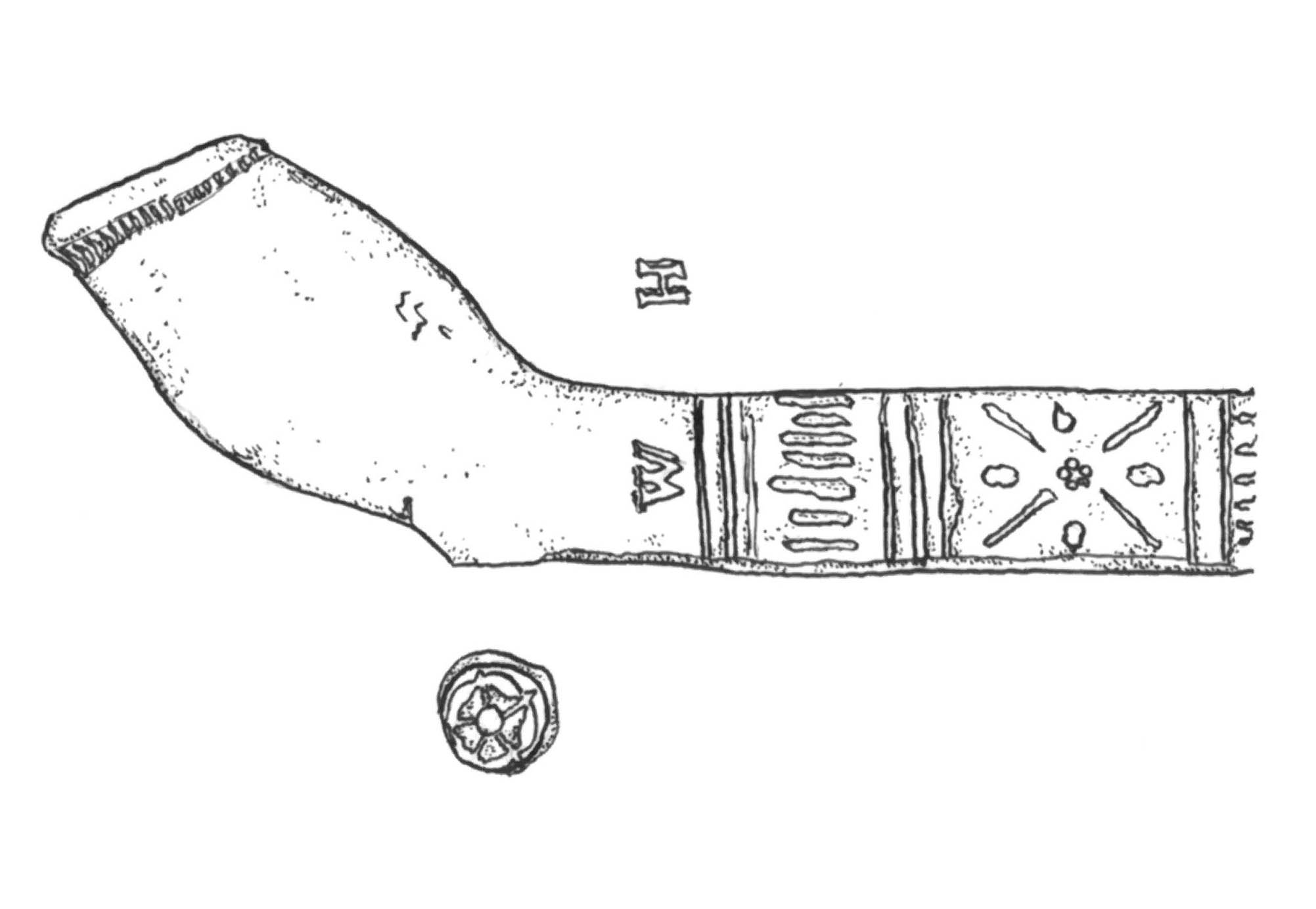
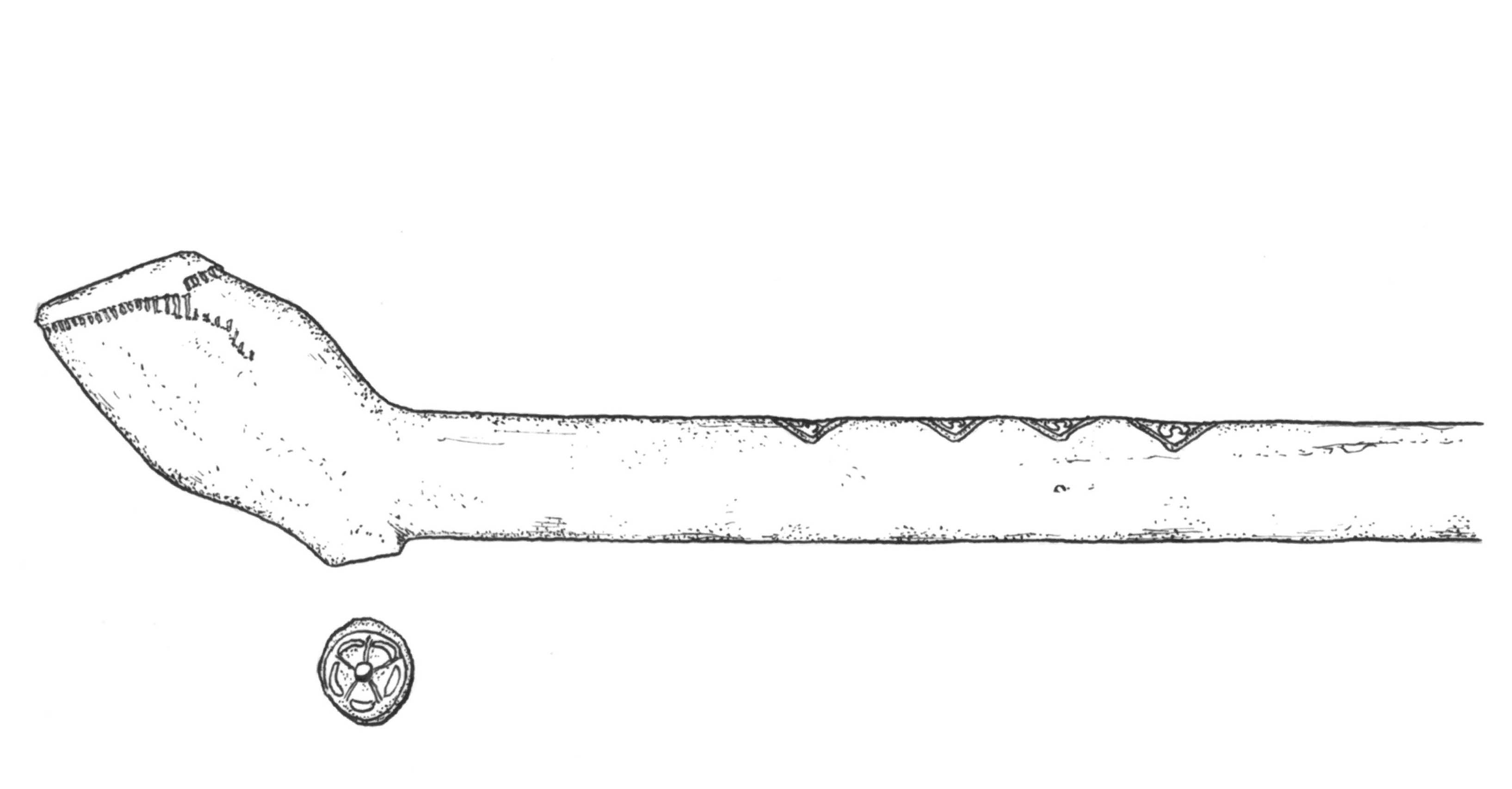
He will live on the Rozengracht for a longer period of time and it is here that he changes his profession. In the 1630s, more and more artisans settled down in a new neighbourhood that is now called the Jordan and at the time was named the New Work. This new precinct was being laid out in the meadows around the city in order to accommodate the low and middle class workmen that made the growing city of Amsterdam function. Many people who settle here went into apprenticeship with a pipe maker. This also was the choice of William Hendrecson, who gradually integrates further and will call himself Willem Hendricksz.. After a period of apprenticeship, he must have succeeded in starting his own pipe workshop. When that happened exactly, is unclear. Initially, his workshop would have been nothing more than a cottage industry where he worked with one or two workers, assisted by his wife.
In 1644 pipe maker Hendricksz. is mentioned in a notary deed together with a Rotterdam-based potter Hendrik Claesz.[4] At that time they make a statement about the types of clay that are used for both crafts. The deed informs us about the extraction areas of the pipe clay and the origin of the raw material for the pottery industry. It appears now a most instructive document from which we learn which types of clay are suitable for making clay pipes. The recording on paper was done at the request of the clay meters in Amsterdam. For years they have had the right to measure the raw material for the potters and pipe makers and they received a fixed fee per barrel. From the fact that Willem Hendricksz. passes this document, we may conclude that he was committed to the common interest of the clay measures. Presumably he had already risen to the status of owner of a respected pipe workshop at that time, as a result of which he, as a representative of the pipe makers, was allowed to make this declaration. The Amsterdam pipe makers did not have a guild and were not assigned to another guild. In case of disputes, representation by authoritative bosses was the only possibility to come to a solution of problems.
The combined workshop
That William Hendreckson. Heptenstal quickly turned into a versatile entrepreneur is proved three years later, in 1647. When he remarried with the Amsterdam Neeltje Michielsen after a fifteen-year marriage, he is called a potter on the Lijnbaansgracht.[5] In addition to his pipe making, which was still functioning at the time, he runs a potters workshop. By having his own kiln, he provided the baking facilities for his pipe factory while he was able to use the top part of the kiln for the red-baking earthenware. We can therefore conclude that the establishment of a pipe factory for Heptenstal has apparently been so lucrative that this gave him the opportunity to invest in a potters workshop including a kiln.
In his potters workshop Willem Hendriksz. employed workmen from different regions, which becomes clear from deeds from the following years. He takes part as witness in various marriage transactions when his potter's hand or potter's companions got married. Most deeds are mentioning "assisted by Willem Hendrixs, his patron". We learn that his staff came from Ghent,[6] Utrecht,[7] Gorinchem[8] and Bergen op Zoom.[9] It is well known that potters often travel from one region to the other. In that way local characteristics are transferred to other regions. For example, Bergs’pottery consisted of special types from Bergen op Zoom, Gouda goods in specific colours came from Gouda and typical Fries pottery was made in Workum and other Frisian coastal towns. Whether Heptenstal accepted these workmen because they were skilled in those regional qualities and therefore extra lucrative for his company, is unknown.
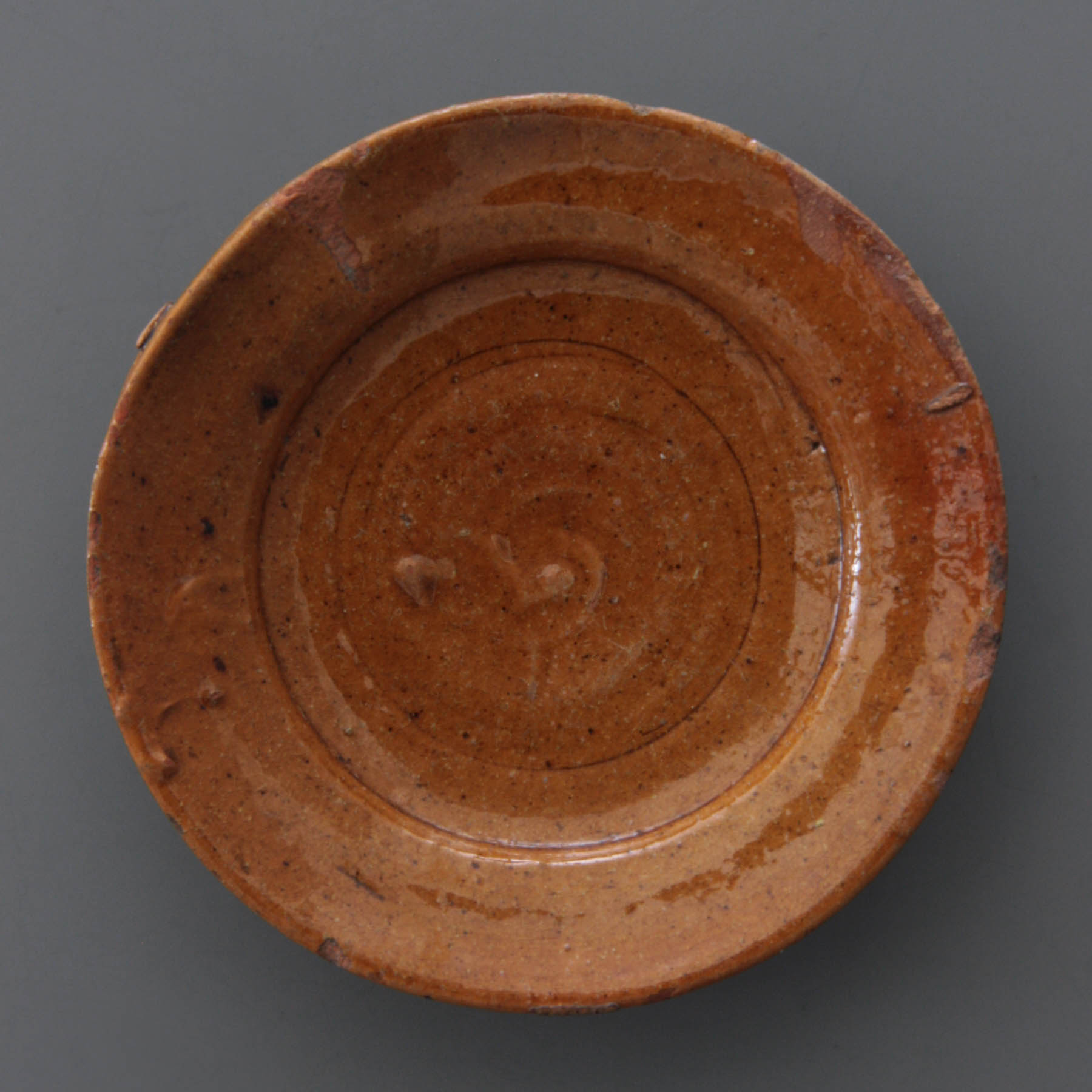
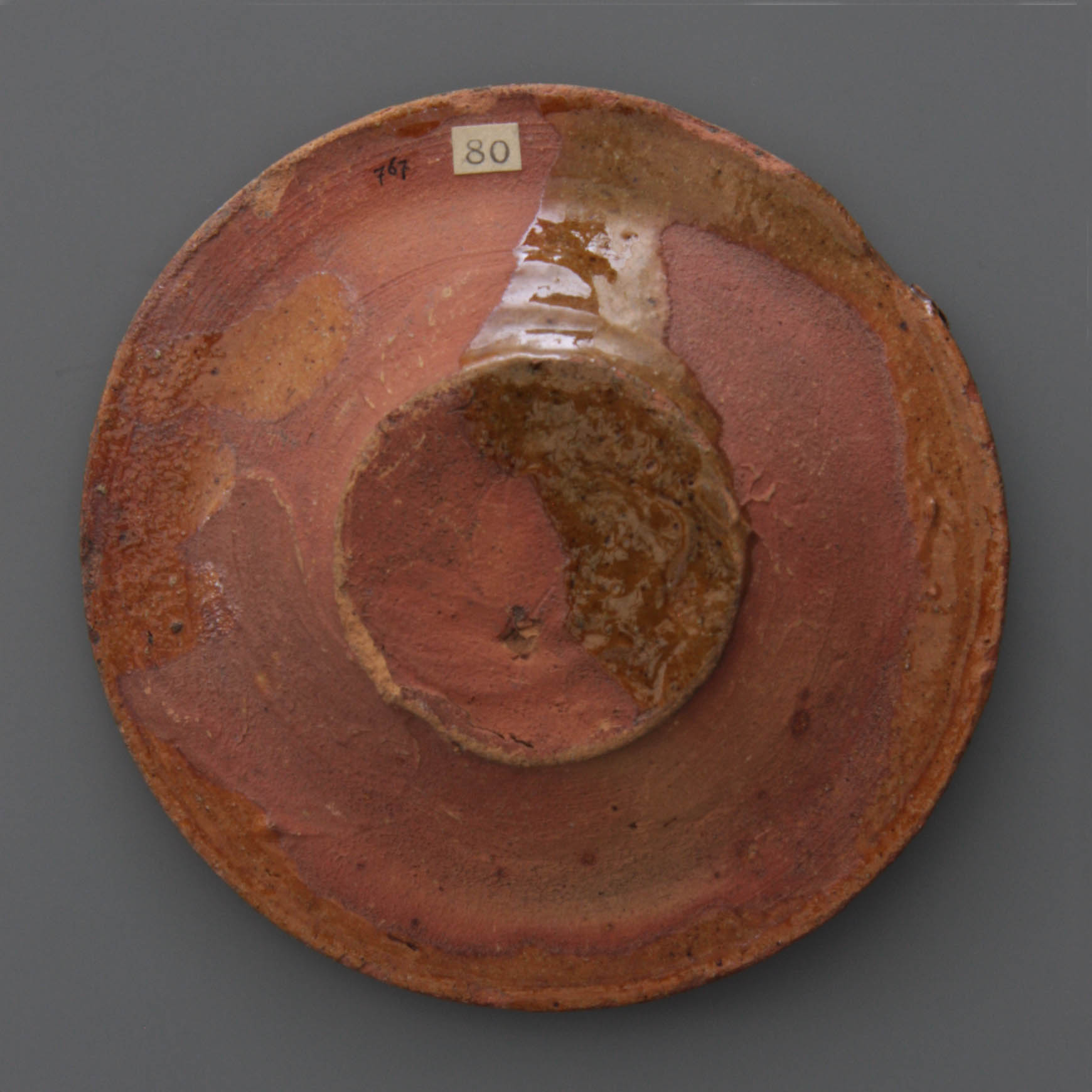
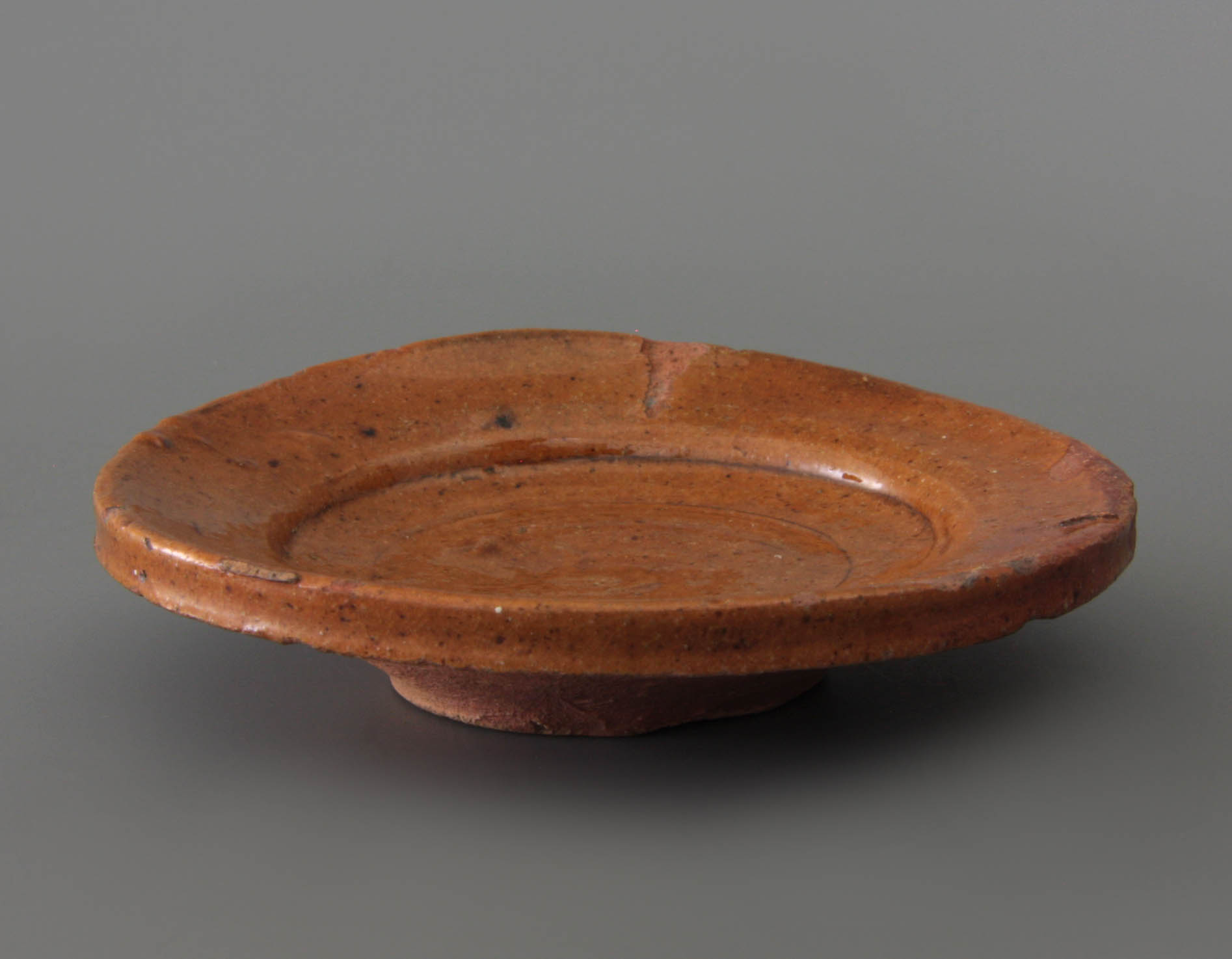
In his pottery workshop Heptenstal focused on ordinary pottery, turned from river clay out of the local river banks, made waterproof with a layer of transparent lead glaze. There are no records about the shapes and types of pottery. A simple small saucer shown here (Fig. 1) is made in one of the factories in the Jordan during the period that Hendricksz. was active. It is most likely that this object was created in his company, but there were more workshops in that neighbourhood. Other types of ceramics could also have been made in his company. It is certain that he didn’t make refined objects with tin glaze , because that production was restricted to a special group, the so-called Delftware or wall tile makers. That industry was technically higher developed and usually the owners were more wealthy.
As noted above, Heptenstal remains the owner of a pipe factory next to his potters workshop. This is confirmed when, in April 1655, another deed is passed by a notary, in which he plays the leading role as a tobacco (touback) pipe maker.[10] Together with the pipe maker Evert Bird from the Rozengracht, he explains that they were visited eight months before by a merchant named Walewijn van der Veen who offered them a batch of pipe clay. Van der Veen showed Willem Hendricksz. a clay pipe as a test of clay quality but Hendricksz. did not want to settle the business with Van der Veen unless receiving an example of the clay to test the quality. Although the vendor promised, Van der Veen never brought a test piece of clay and the tons of clay that Hendricksz. received in the end, were not from Hessian origin but from a different find spot. For the pipe industry this clay could not be used. Hence Willem Hendricksz. now requests an official statement from Walewijn van der Veen that he had not received any other clay in the meantime. The deed is one of the countless evidences of fraud that occurred during the sale of pipe clay. It is interesting that the well-known pipe maker Evert Bird is the second main appellant of the declaration and since the deed is made up at the request of Bird, we conclude that the batch of clay will have been destined for both pipe makers.
On May 13, 1655 Willem Hendricksz. buys a pottery with a house located on the Lijnbaansgracht, on the corner of the Passeerdersstraat, which is still in the Jordan.[11] It is unclear whether this building was located close to his old company or whether he is now the owner of the pottery he has rented before. The seller is the potter Abraham Anthonisz. In this deed Willem Hendricksz. is now called sugar baker, so that we have an indication of what type of pottery he was or was going to produce.
In the numerous Amsterdam sugar refineries, three different types of industrial pottery were used at the time. Firstly, large and sturdy pots with a pear-shaped body on a wide stand ring and along the opening a discreet band shaped collar. During the refining of sugar, high earthenware funnels were placed on top of these pots in which the sugar could crystallize. The syrup that came free leaked into the heavy pots. These torpedo-shaped sugar funnels were made of simple red-baking earthenware just as the pots, but wooden examples of both are known. The conical sugar loaves that were formed in these funnels were the valuable end product.
For the benefit and use of the consumer, the sugar industry used a third type of earthenware. : simple syrup jugs, locally called Amsterdammertjes. Such jugs are between 20 and 24 centimetres high and have a diameter of about 10 to 11 centimetres. The content is barely half a litre. The small syrup jugs served as packaging for the sale of the syrup and were used in the household. They were very practical thanks to a standing ear and a pouring lip.
The manufacture of the above-mentioned three ceramic objects was done in large numbers and in a proper factory manner. The turners worked on piece wages and were paid per shelf, the so-called worp (throw). For the potters it was important to work quickly and skilfully, while no aesthetic requirements were being imposed on the end product. The use of the objects was temporary, since the funnels proved often fragile to unlock the sugar and the small jars were used until the syrup was finished. So, quantity went for quality , which is mainly seen in the syrup jugs that have thick bottoms and irregular rotational ribs.
The company of industrial pottery of Willem Hendricksz. was certainly not unique. Already around 1613, a certain Jacob Cornelis Pot owned a similar workshop that was located in the Laurierstraat. This specialized company would become one of the largest in this genre. Since there was no monopoly on this industrial pottery, it could well be made by several companies. In 1664 a similar factory was described by a German traveler eben über der Bahngraft, an der abendlichen seite des Prinsengraft.[12] Although the exact location of this company cannot be determined, possibly the company of Heptenstal is meant here.
Five years later, on 8 May 1660, Willem Hendricksz. buys a house and yard on the Lijnbaansgracht south side. The deed now deals with Willem Hendrixsz. Heptenstal master potter.[13] With this purchase it is unclear whether this is a private home where he intended to live with his family or that it served to expand his potters business. Thirdly it can also concern simple money investment. The fact that Heptenstal is called master-potter indicates that he did not do the management of the company himself, but that a master servant or a manager worked for him. In that position, a house on a different location was certainly justified.
The records show alternately the importance of the pottery workshop and the pipe factory. When on 26 January 1669 a house with a yard and stable is sold on the Lijnbaansgracht, this appears to be adjacent to the pipe factory of Hijptenstal.[14] So Willem Hendriksz. still led a mixed company where both pots were turned and pipes were pressed. He had that possibility because he mastered both crafts, but more importantly because he owned several buildings next to each other, of which one was the pipe-making workshop. As is often the case, the houses were connected to each other via the small yards in the back. Separating the two workshops was technically spoken a necessity. The large quantities of red-firing clay used by the sugar pottery formed a danger for the white-baking pipe clay. A small amount of red clay could spoil a tub with white pipe clay. Moreover, the workrooms were arranged in a complete other way, while the workmen were also very differently skilled.
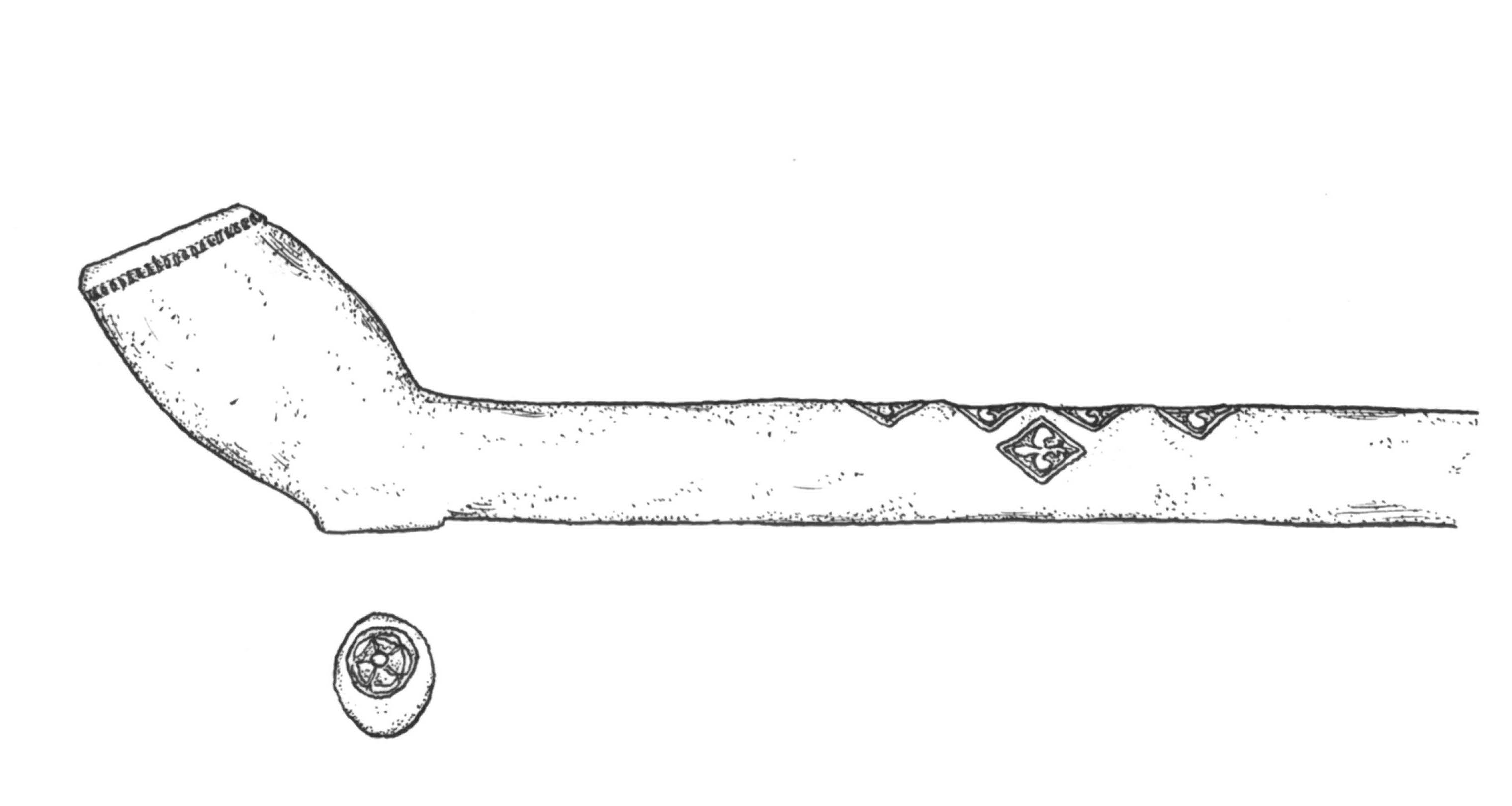
In the same year 1669 the then seventy year old Willem Hendricksz. married for the fourth time.[15] Bride is Trijntje Alberts, another woman of Amsterdam origin. As a profession he mentions potter again, which makes it increasingly clear that making pottery gave him more status than owning a pipe makers workshop. Unfortunately his fourth marriage did not last long, Heptenstal died about a year later. However, his death was not yet the end of his history in the Amsterdam archives.
On June 8, 1673, one Pieter de Loo bought een woonhuis en pottenbakkerij mitsgaders kleiloots en nog een klein lootsje en erven (a house and potters workshop, together with clay shed and a small wooden building plus yards), from the estate of the late Willem Hendrikse Heptenstal.[16] The description confirms the assumption that the company consisted of several buildings. Unfortunately, the pipe workshop is not mentioned, which makes us consider that this building was sold to another candidate. It is remarkable that the pottery of Willem Hendriksz. will continue to be called de pijpmakerij van Heptenstal, even when the pipe making had completely replaced by the production of pots . The pottery itself remains in existence until the eighteenth century and changes hands five times in thirty years.[17]
The products
In course of the years, a number of products are attributed to the pipe maker Willem Hendricksz. Heptenstal as a result of the discovery of unsmoked clay tobacco pipes in the immediate vicinity of the building on the Lijnbaansgracht. Thereafter countless pipe finds of similar shape are identified as being made in the same way and in the same style. Main criterion is that all these products testify masse manufactory, meaning that the origin must be sought at a larger company. In view of the already reported collaboration with Evert Bird, whose products do not stand out by quality and the manufacturing of the industrial pottery for the sugar bakers, I suspect that Heptenstal was not striving for quality for both the clay pipes and the industrial pottery. As with the industrial pottery, the production of these pipes were more about production speed than finishing quality.
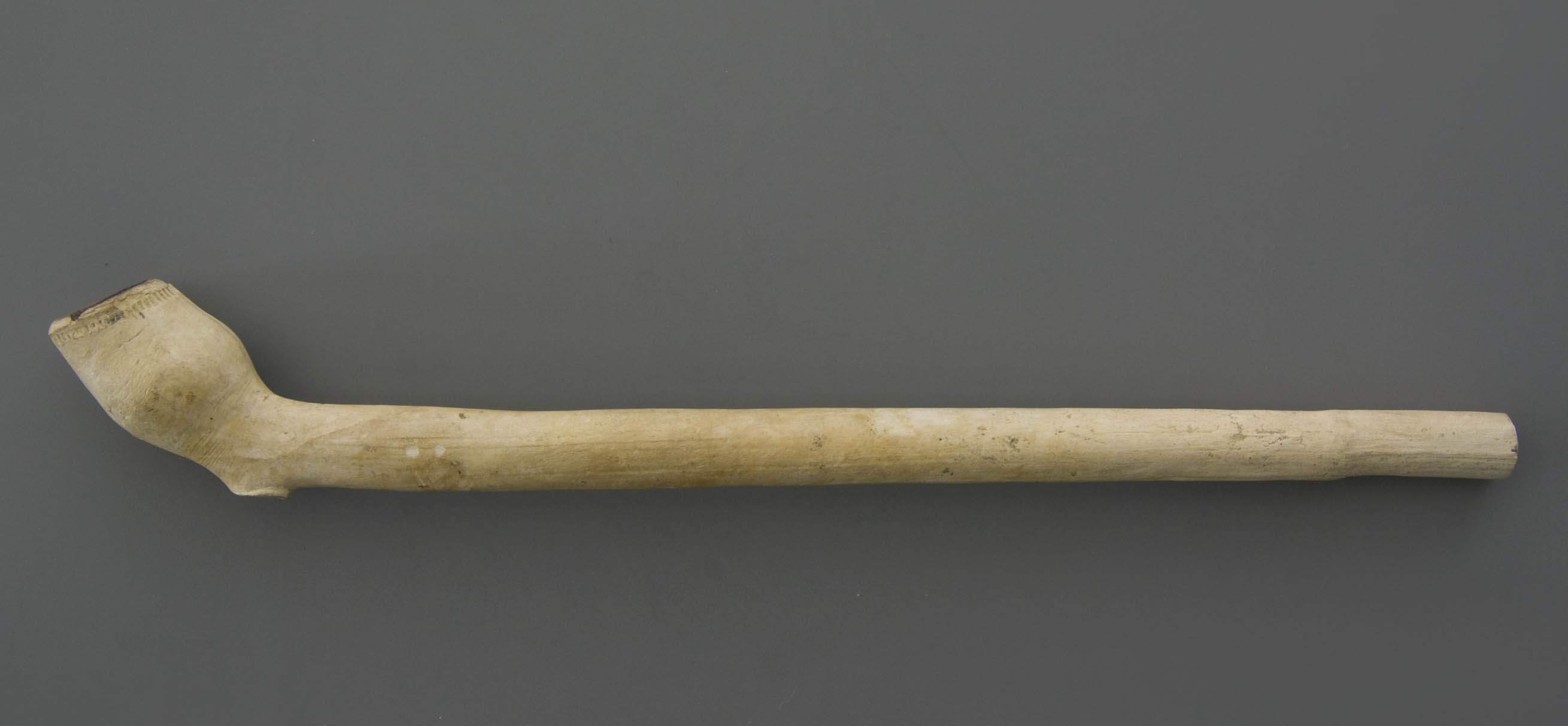
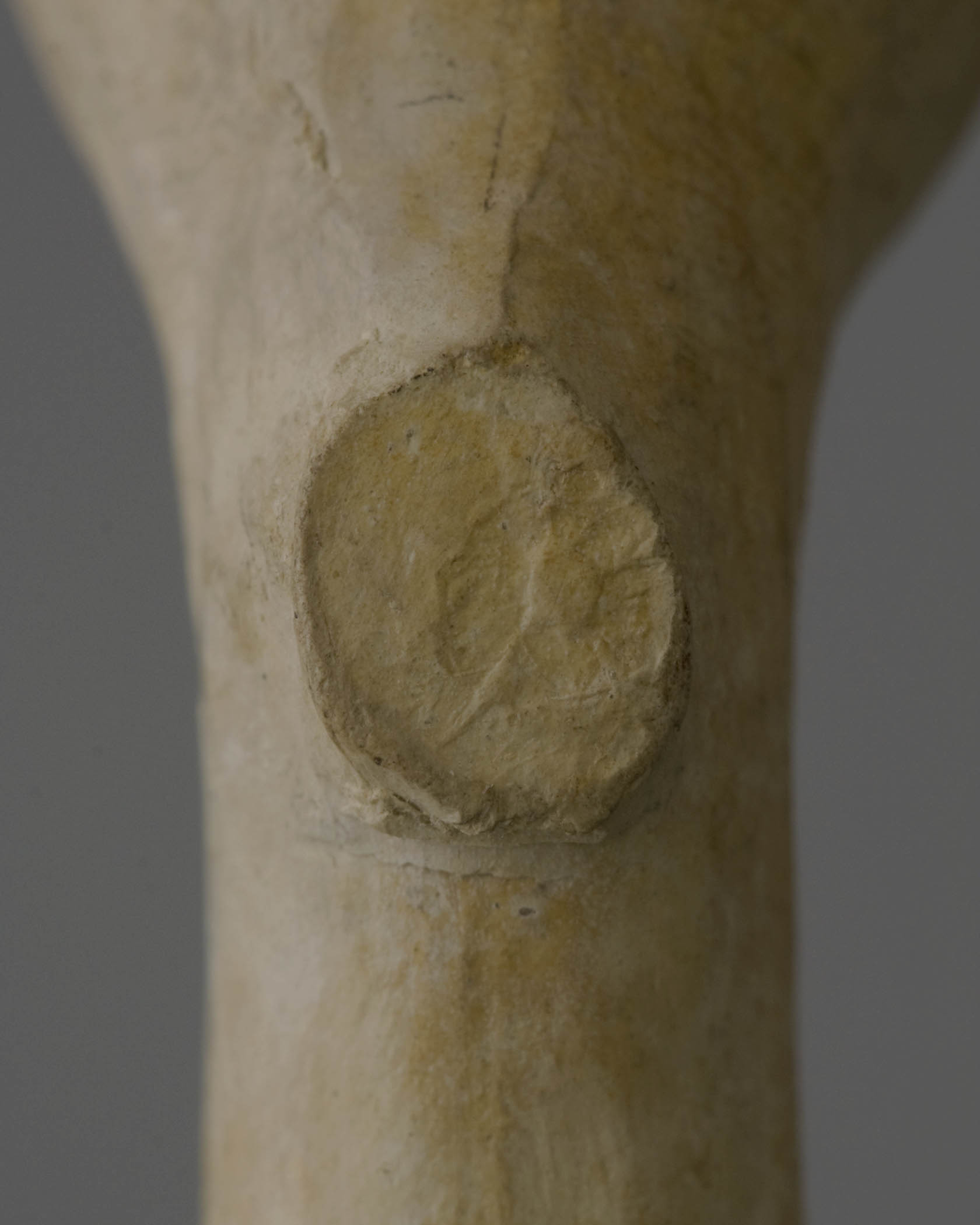
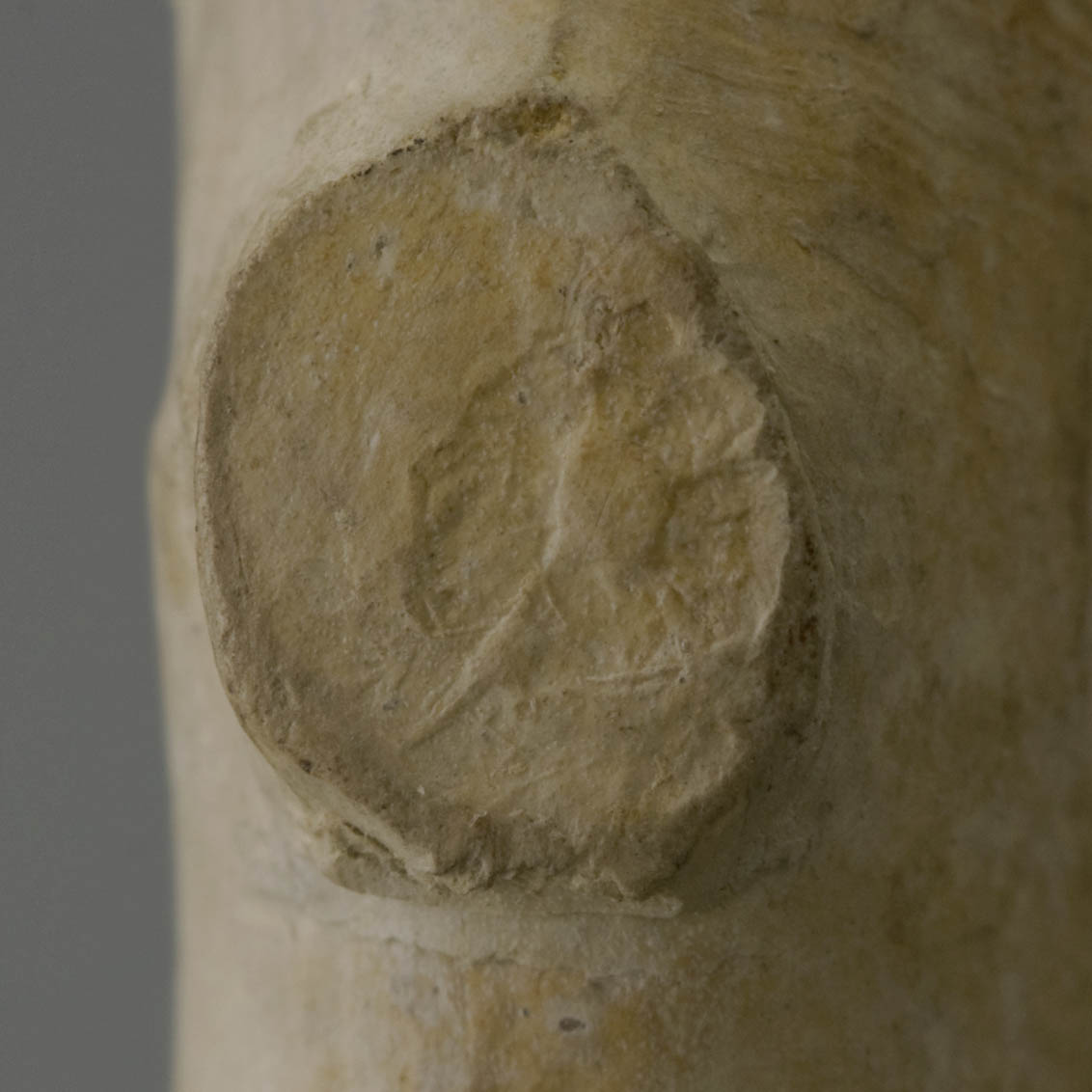
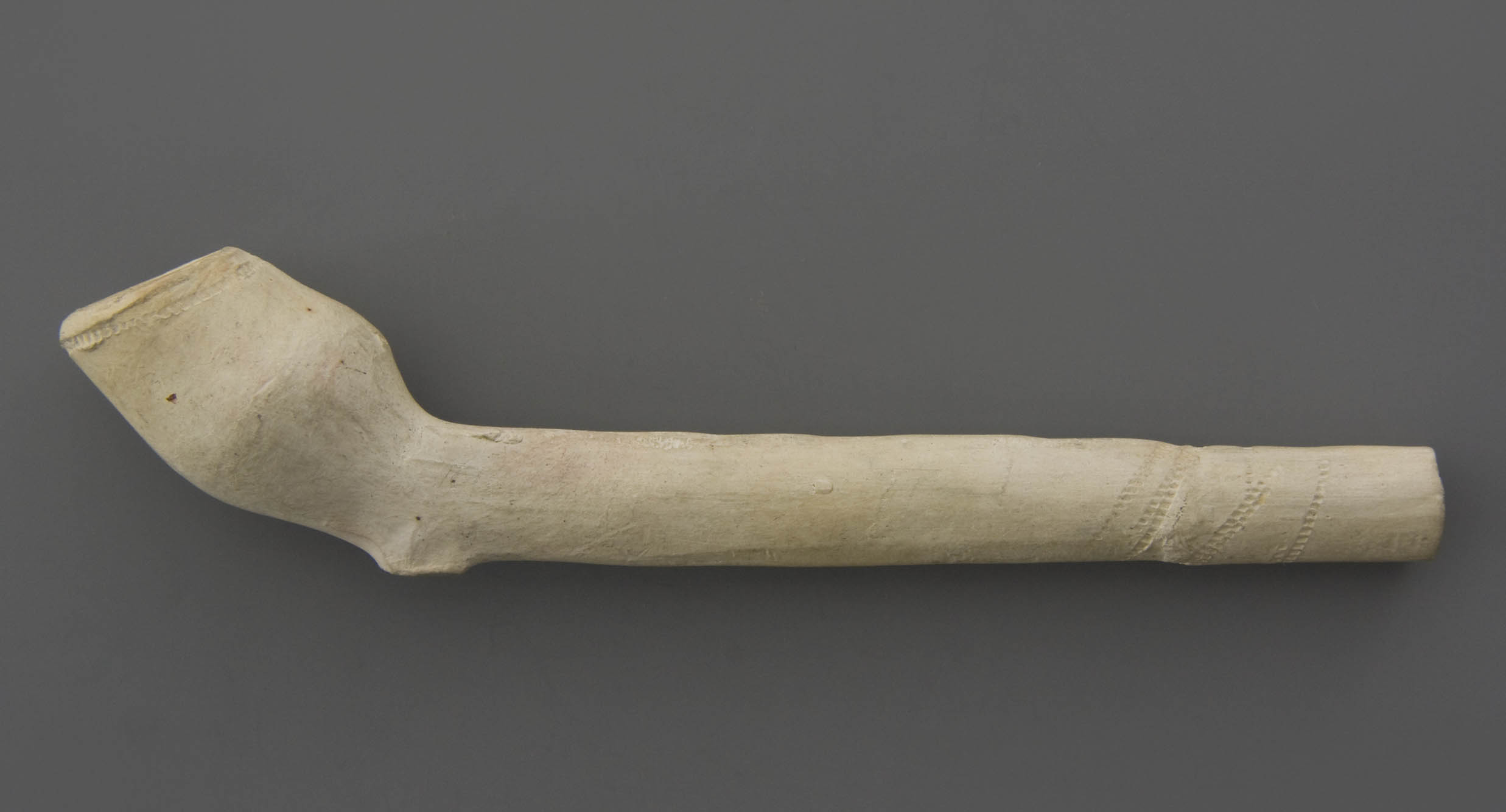
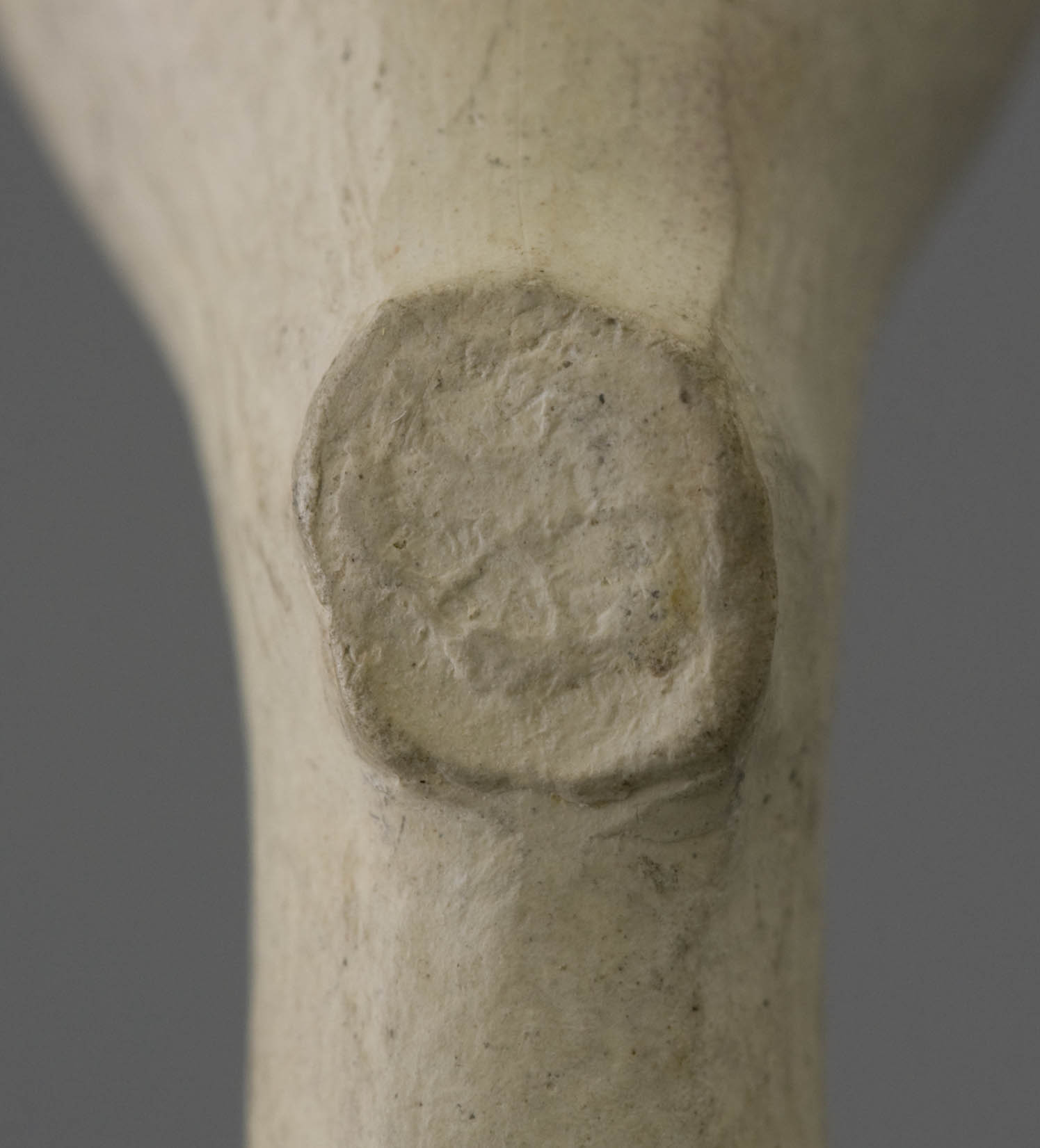
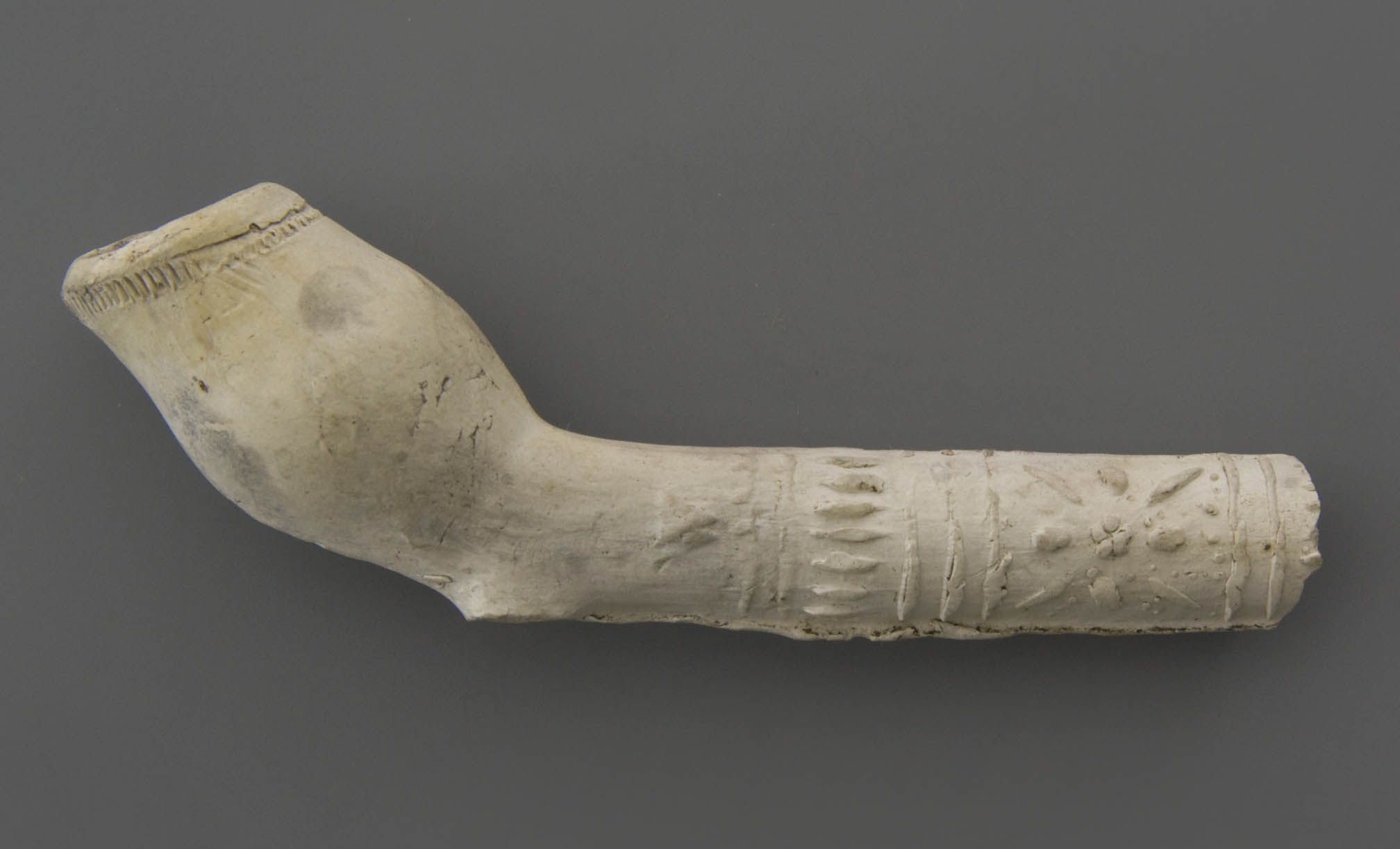
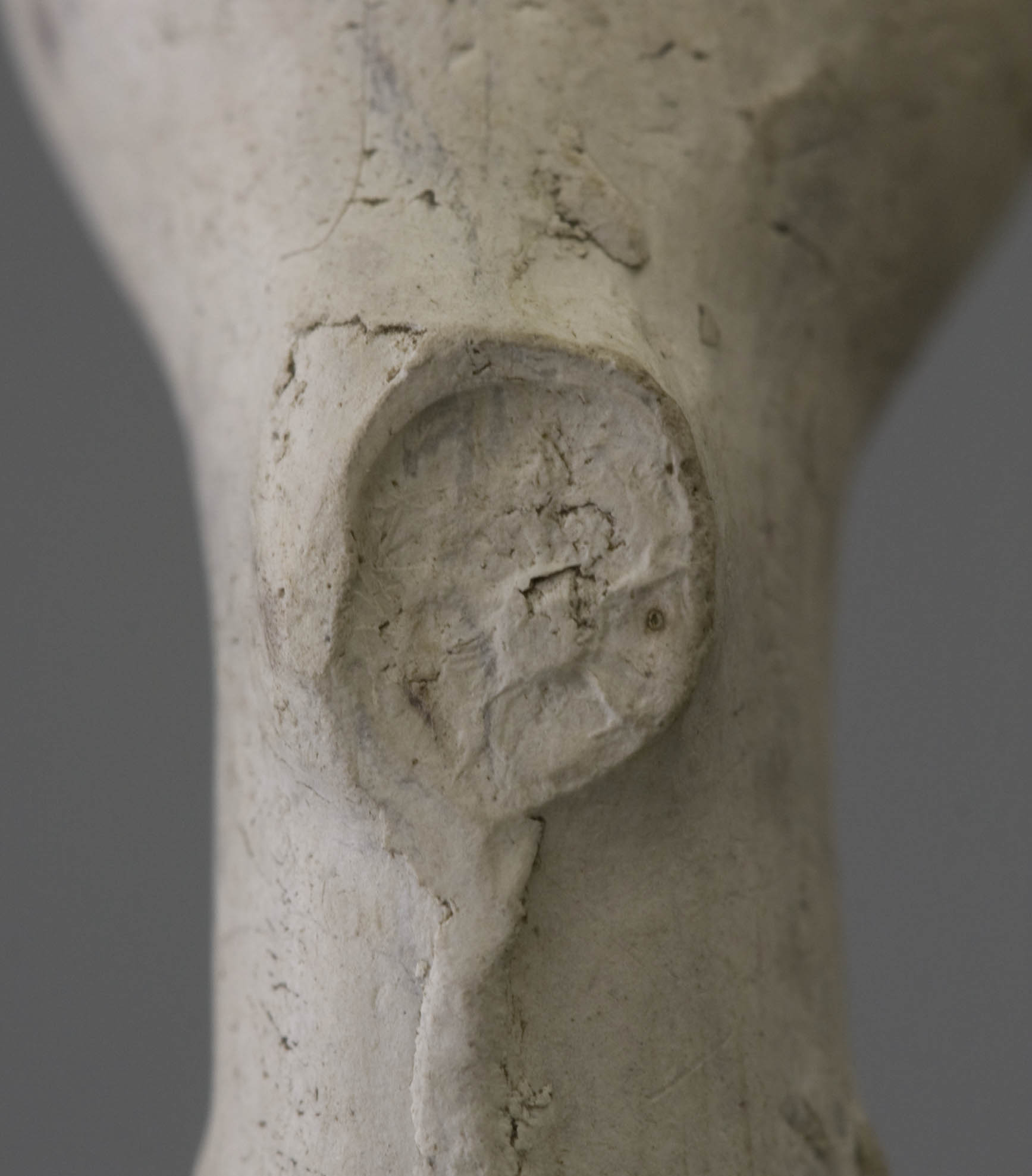
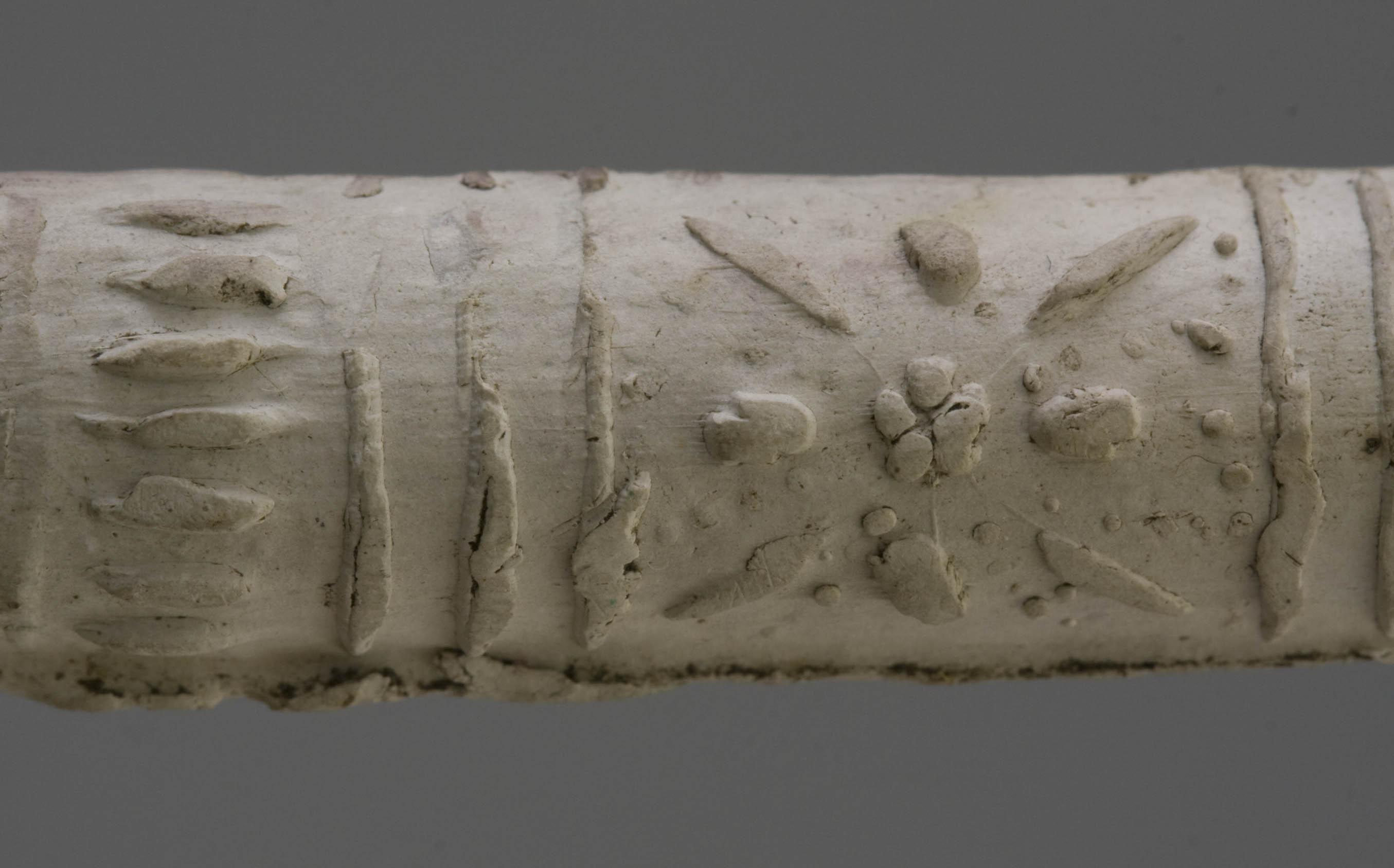
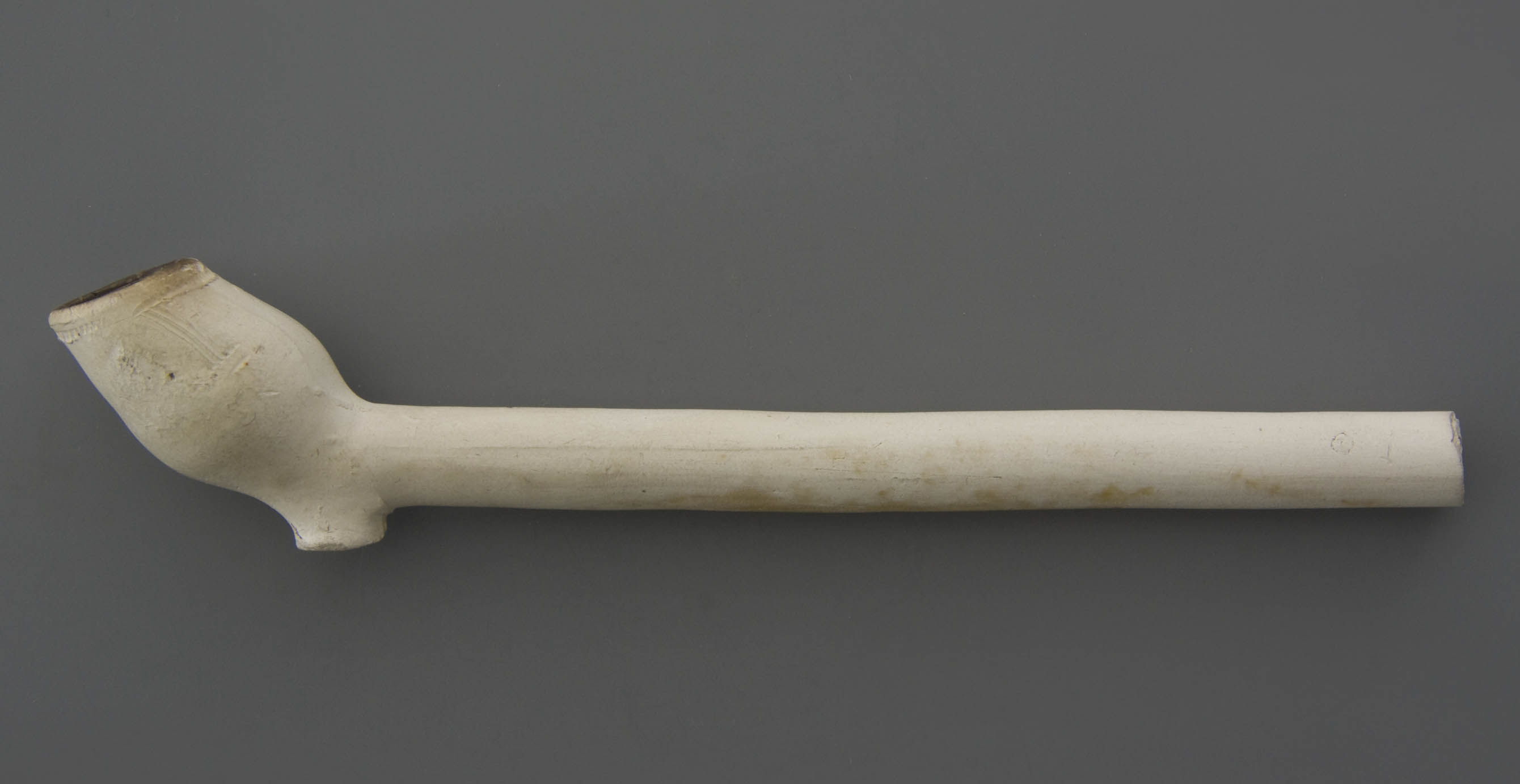
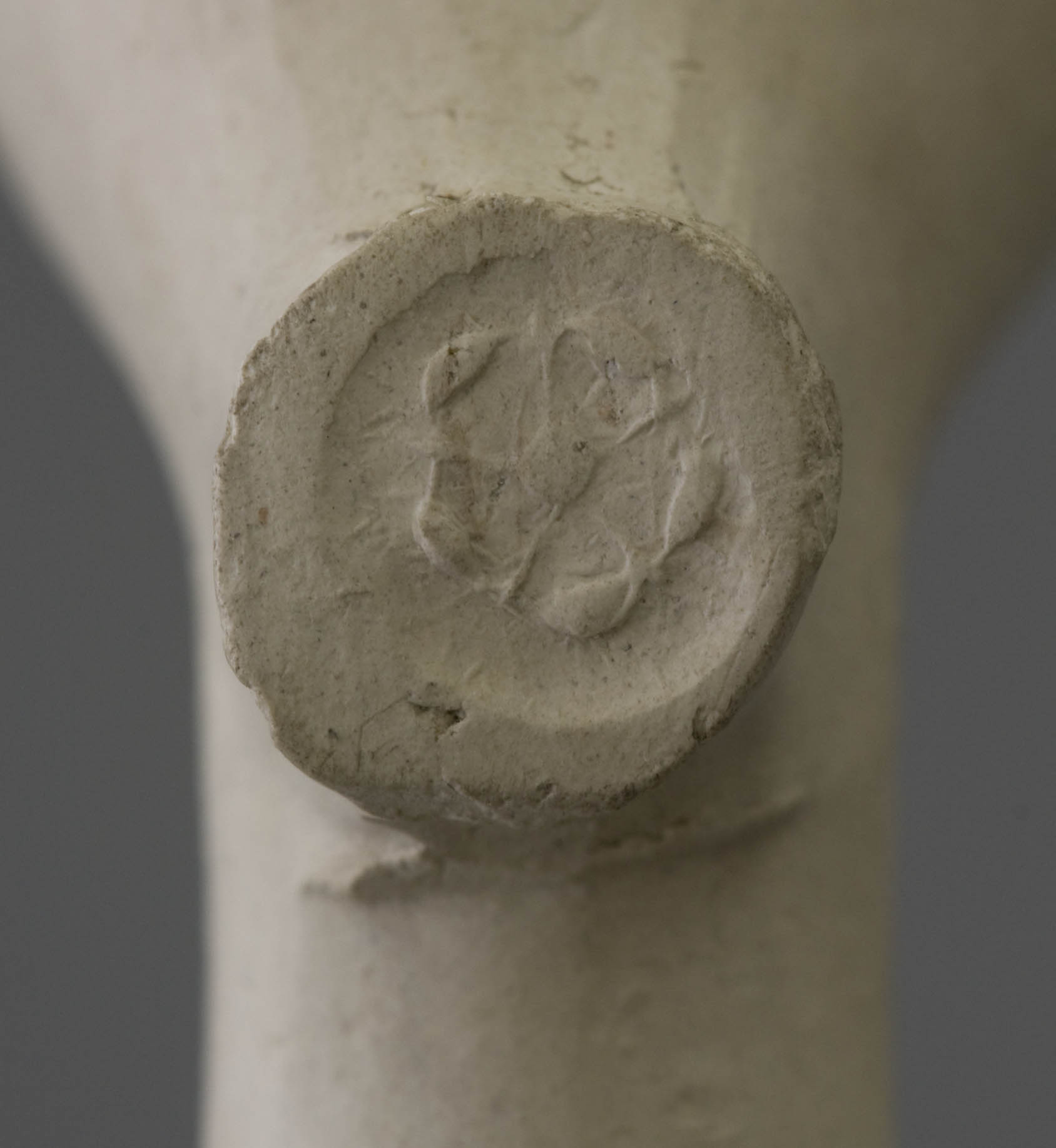
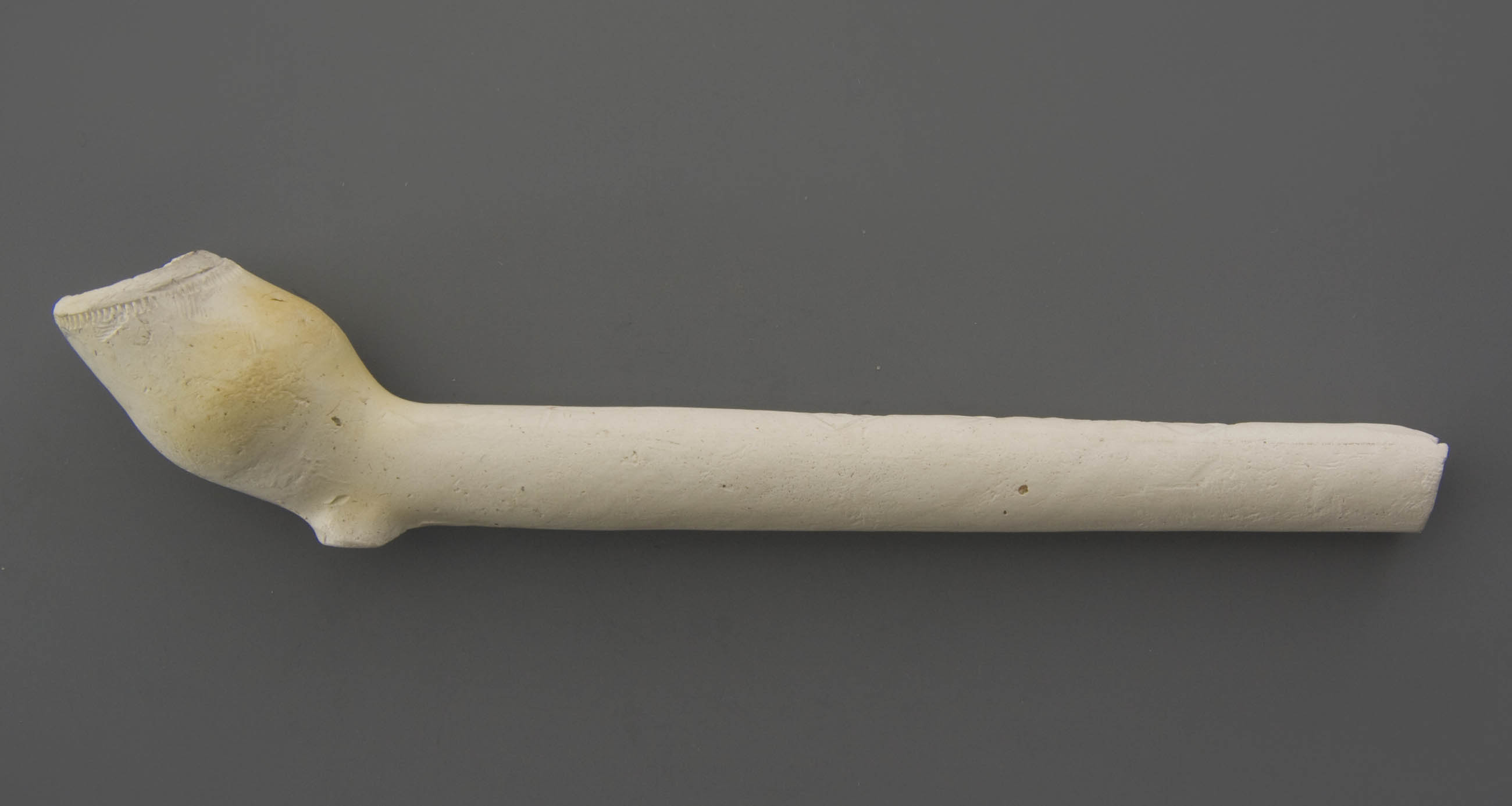
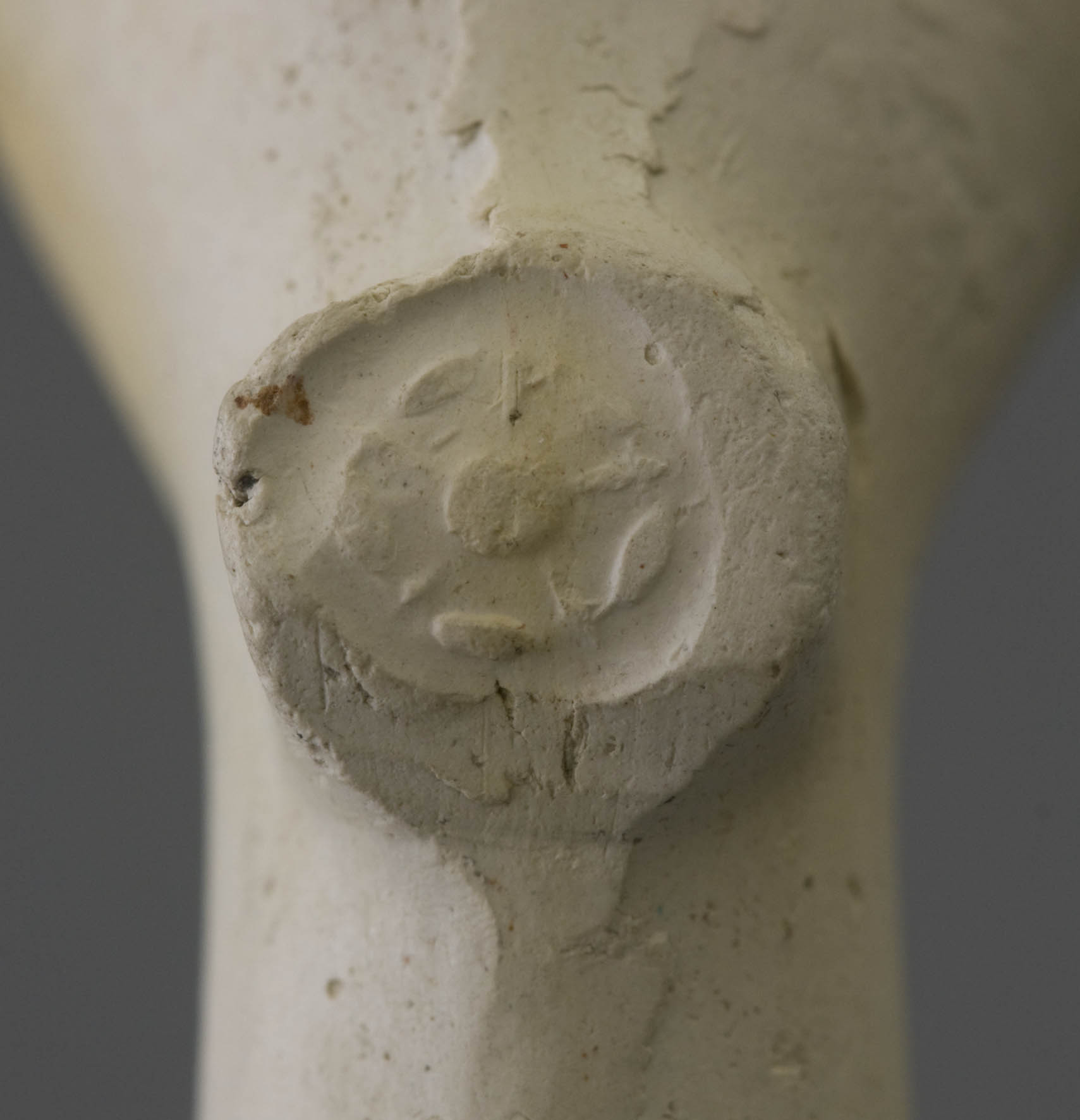
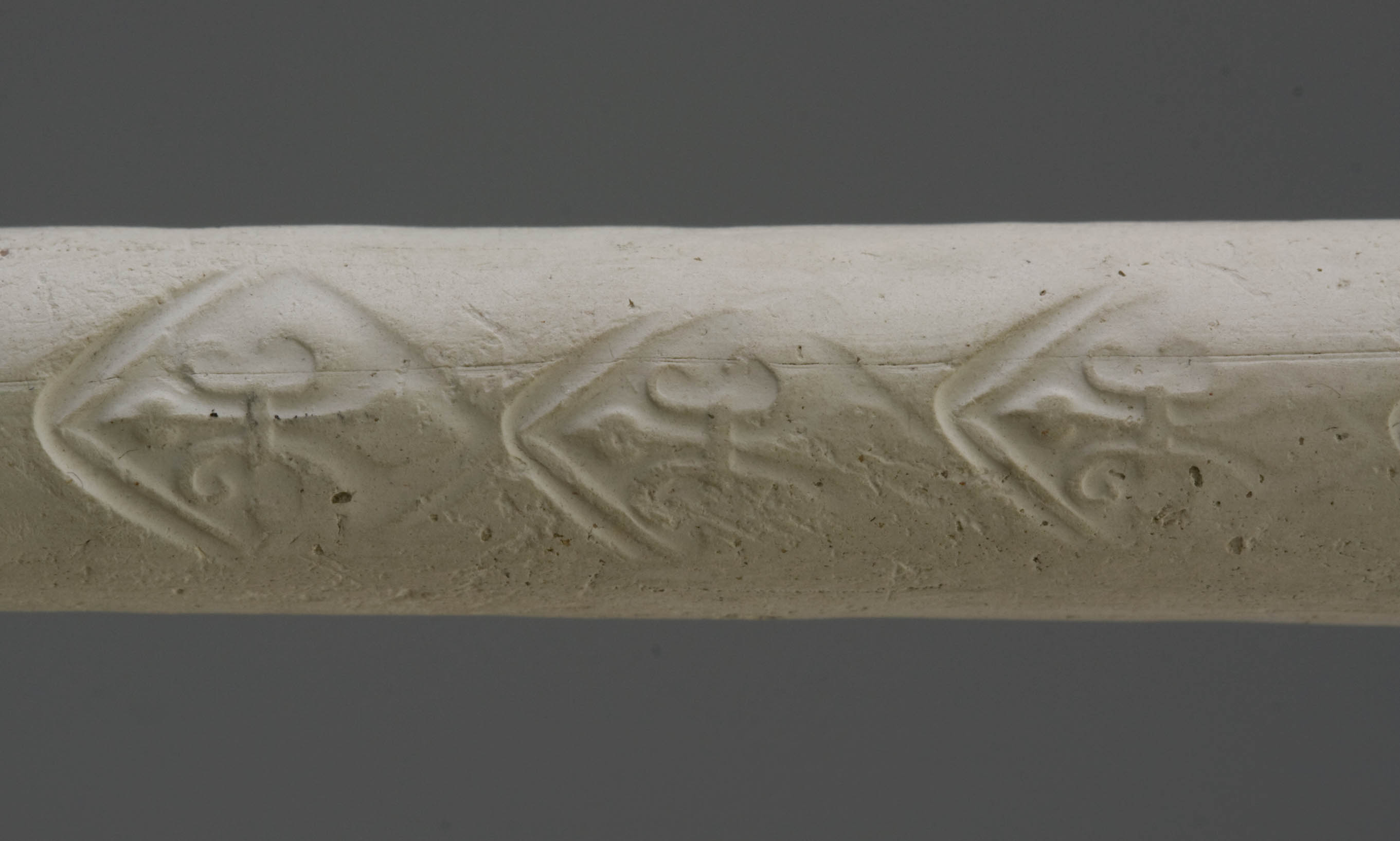
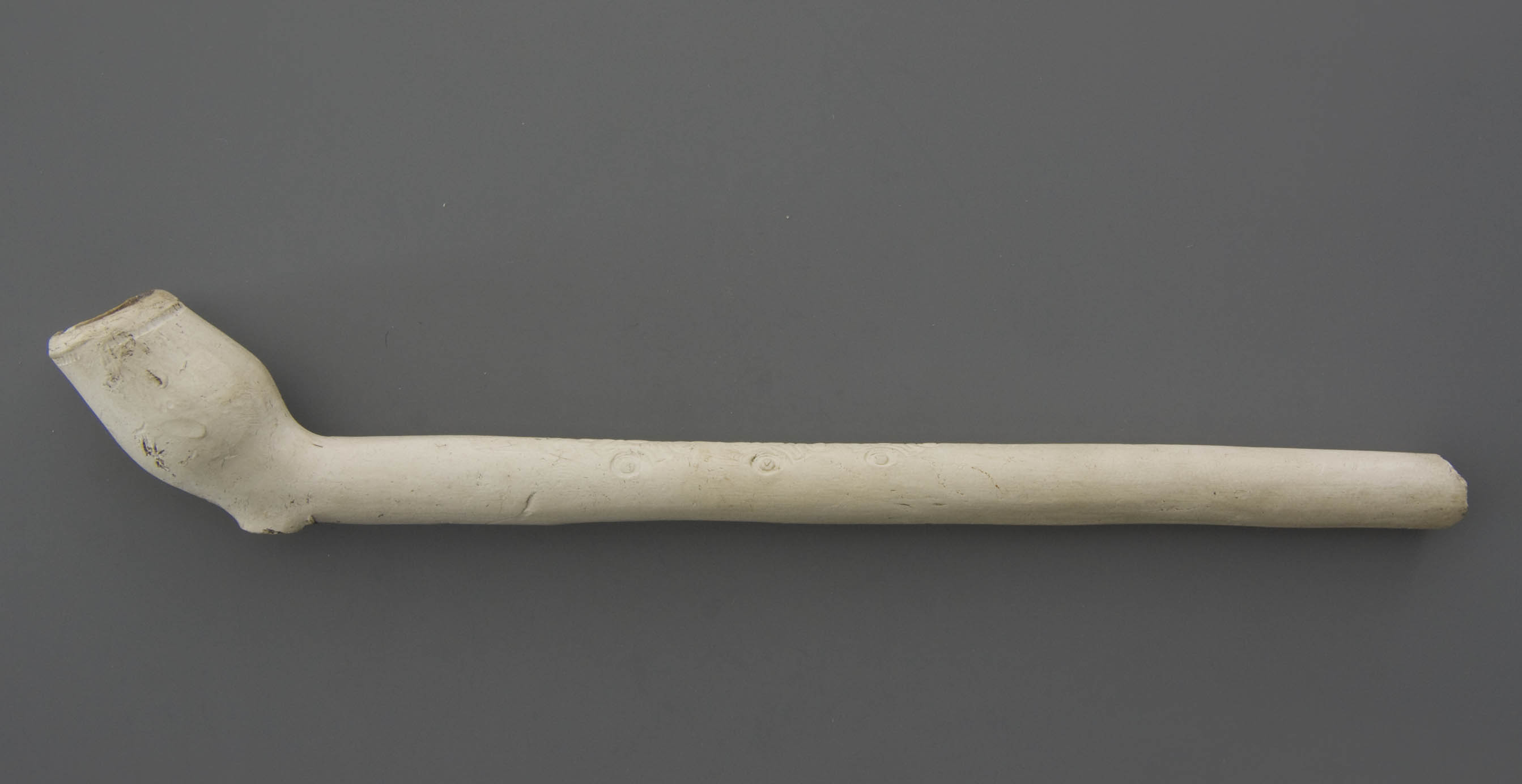
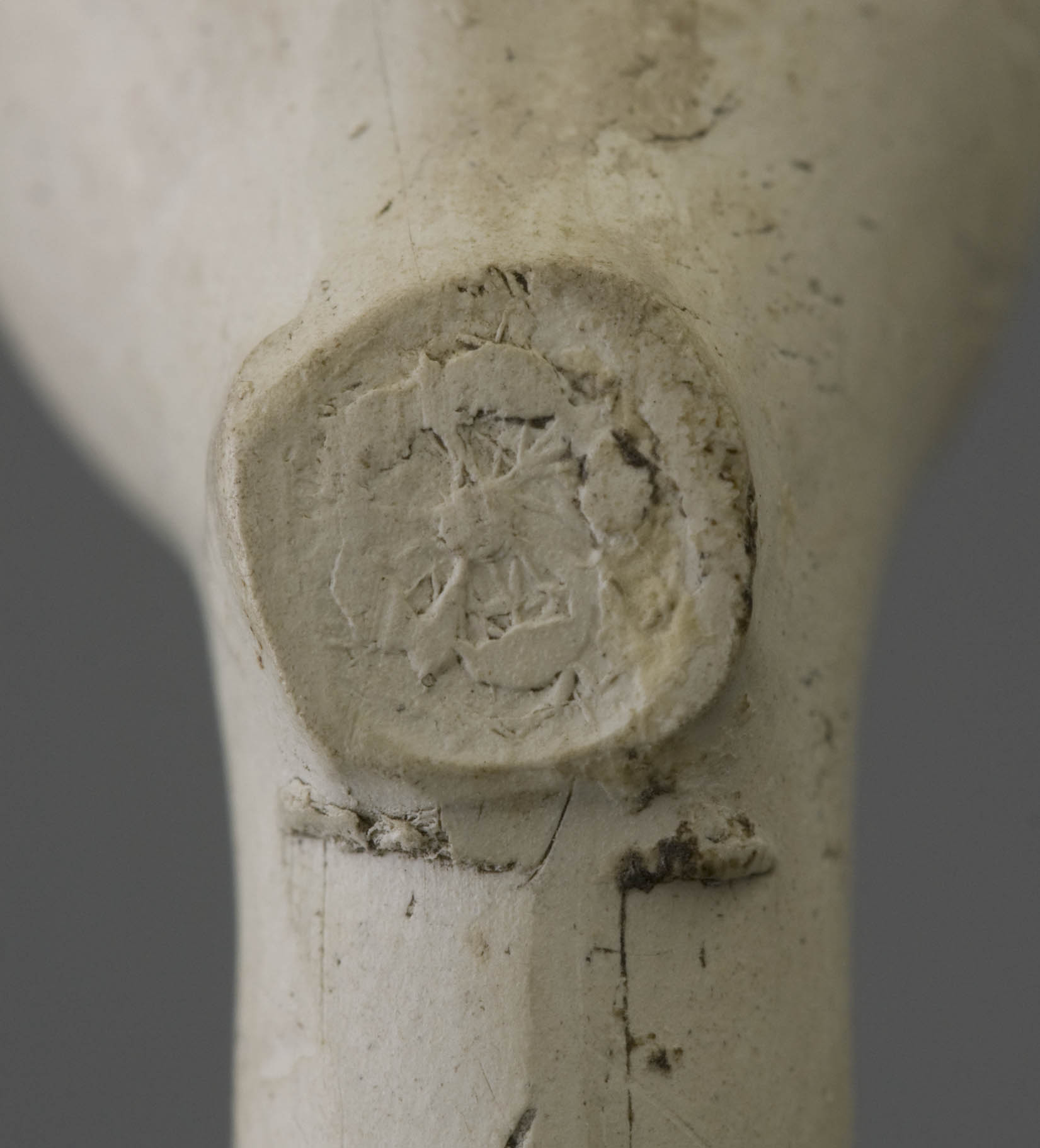
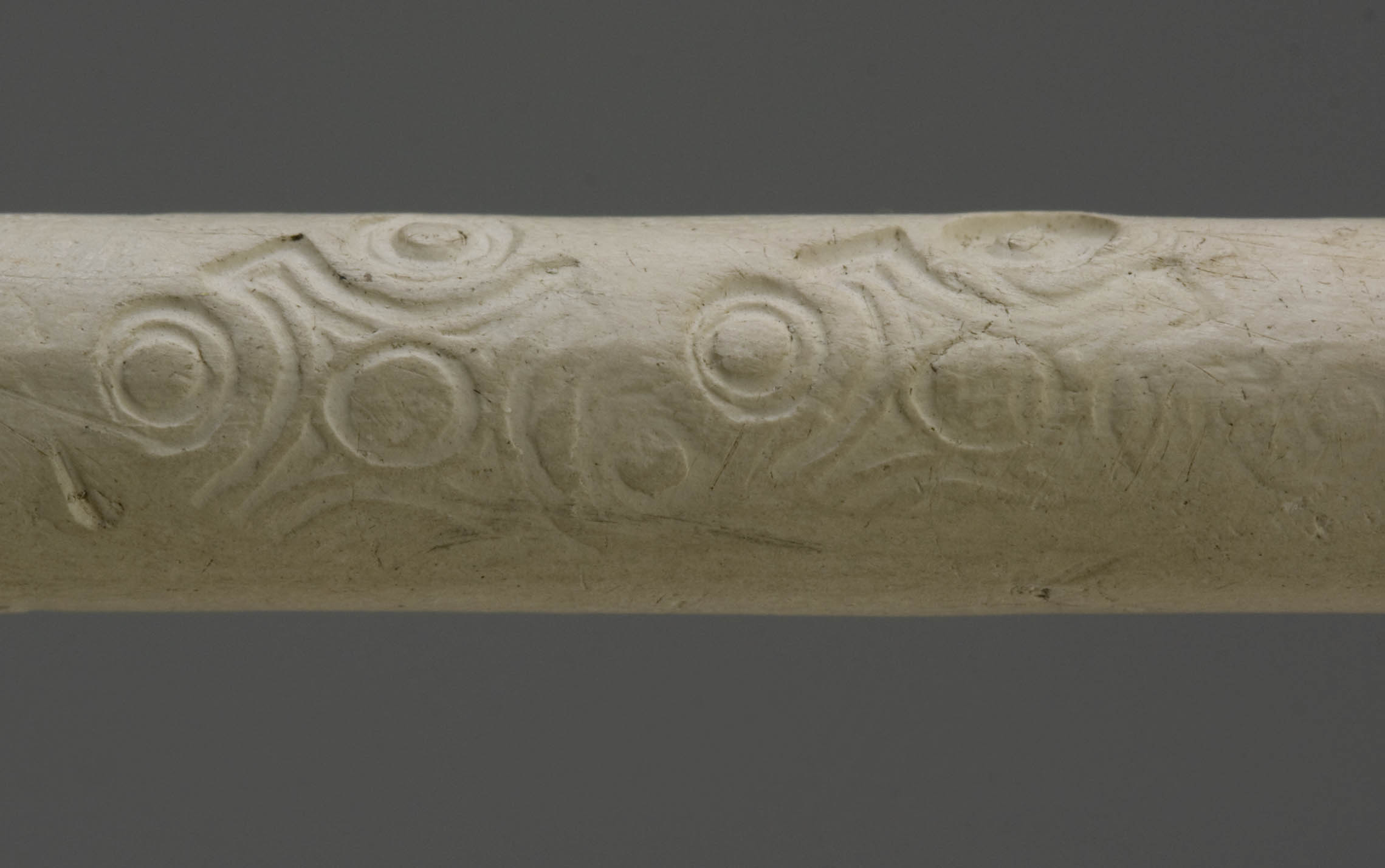
Willem Hendricksz. Heptenstal used as a pipe mark a rose with trapezoidal leaves (Fig. 2-9).[18] Many different versions of this pipe mark are known, used on pipes that we can roughly divide in two standard bowl sizes. After an early double conical pipe bowl (Fig. 2), two main shapes emerge. The so-called dikkop, literally fat bowl, is bulbous and is fairly coarse and solid (Fig. 6-7). In addition, there is a much slimmer shape with a narrower neck and thinner stem (Fig. 3-4). It seems that both shapes have been produced side by side, witnessed by locations where they were also found together. The difference between the two shapes is therefore more a fashion issue than a time-related phenomenon.
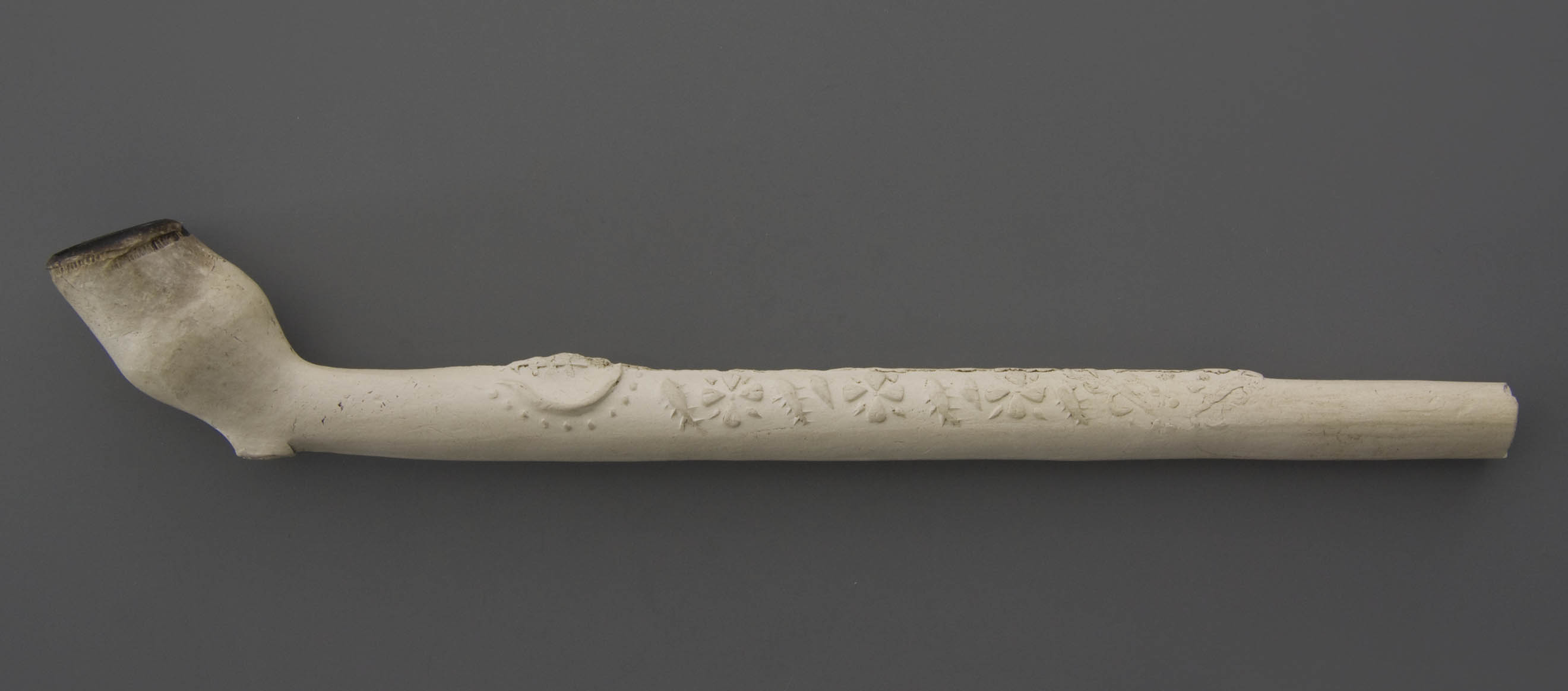
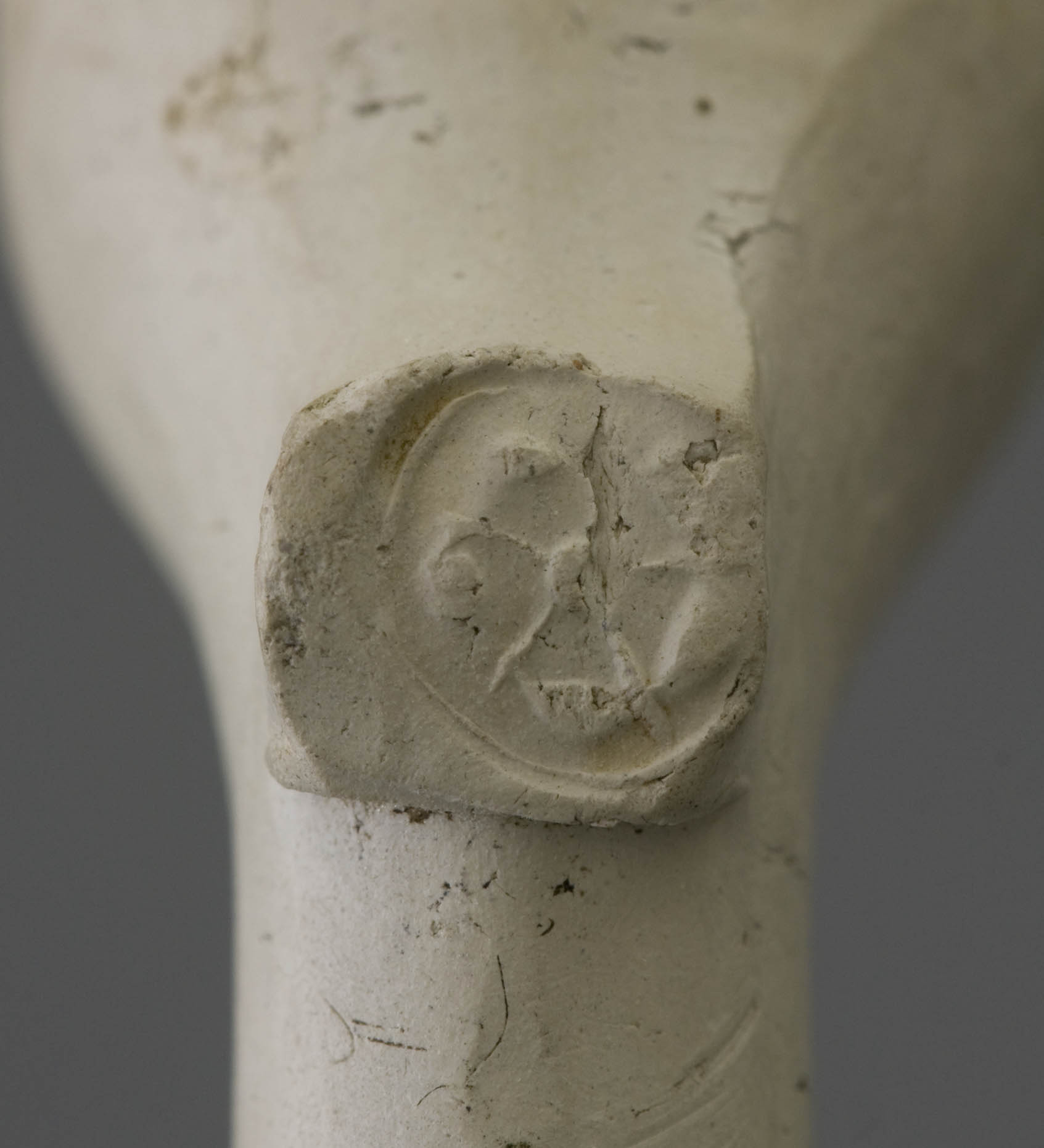
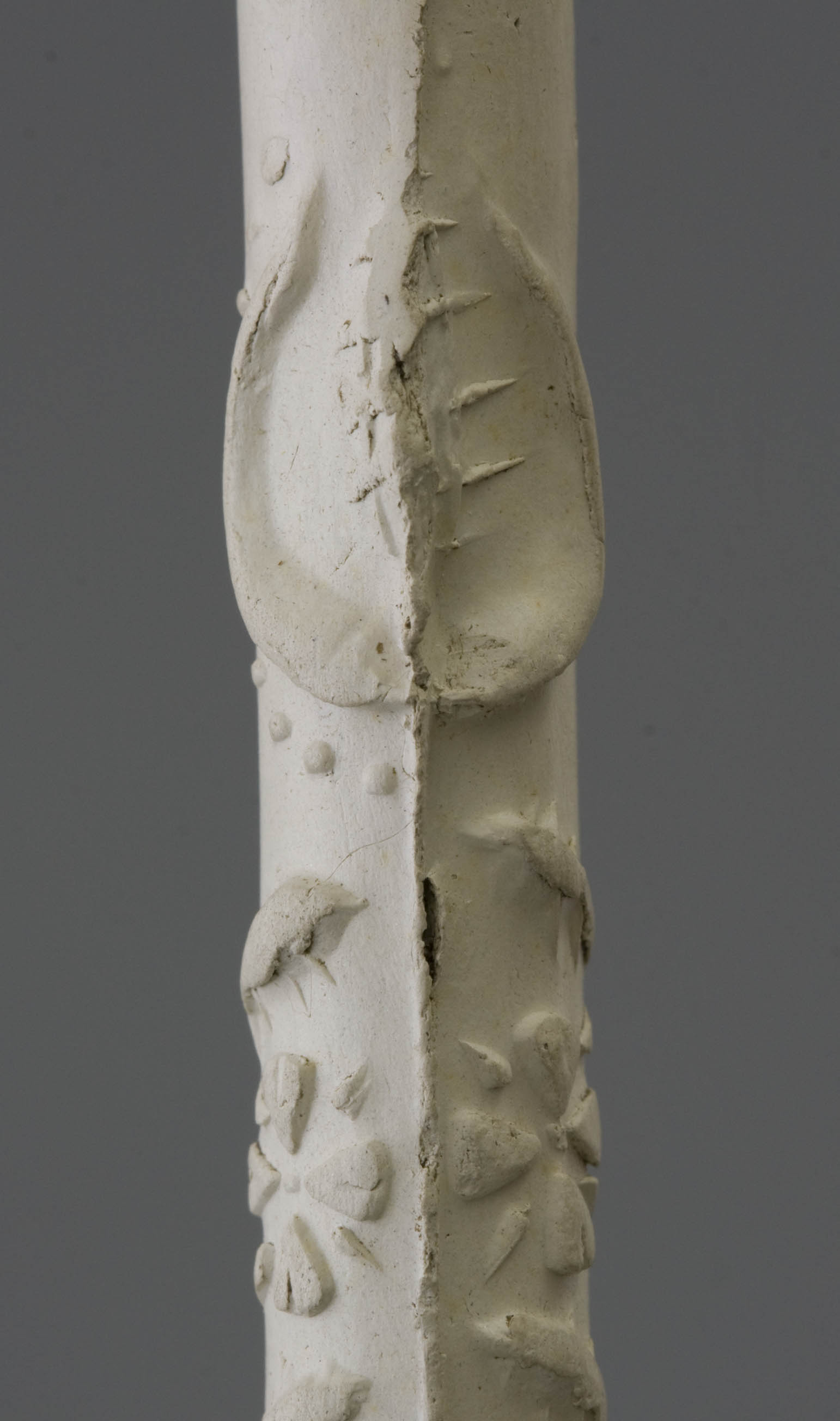
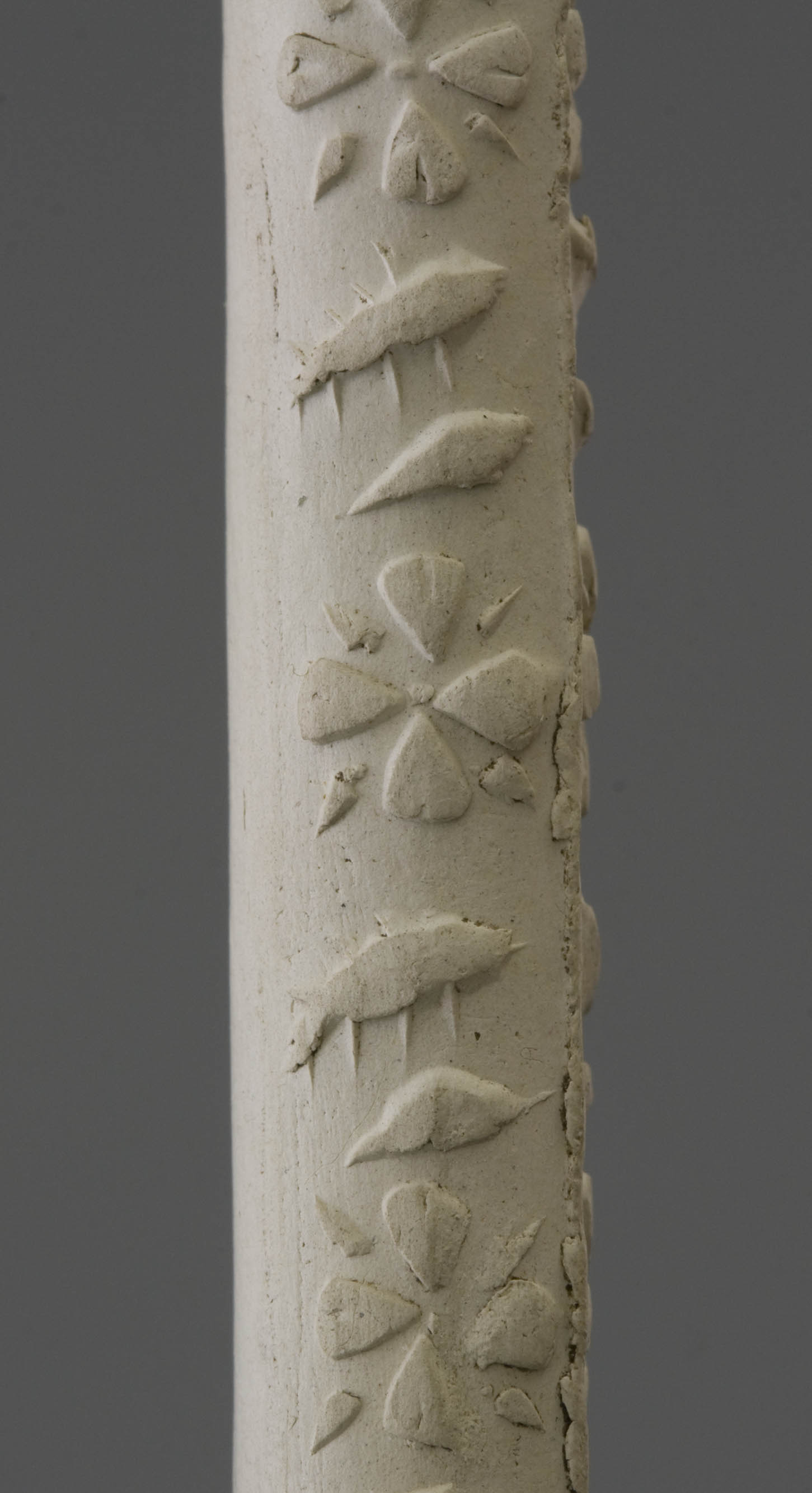
The finish of all these clay pipes is characteristic for the Amsterdam workshops in general. The marking of the centre of gravity with a fine stamp is often omitted, while most products are not polished or stroke burnished either. In the city of Gouda where standardization in pipe making was well developed the omission of one or two finishing operations is almost a deadly sin, but in Amsterdam this is common practice. This makes that the quality of the Amsterdam pipe balances between coarse and fine.
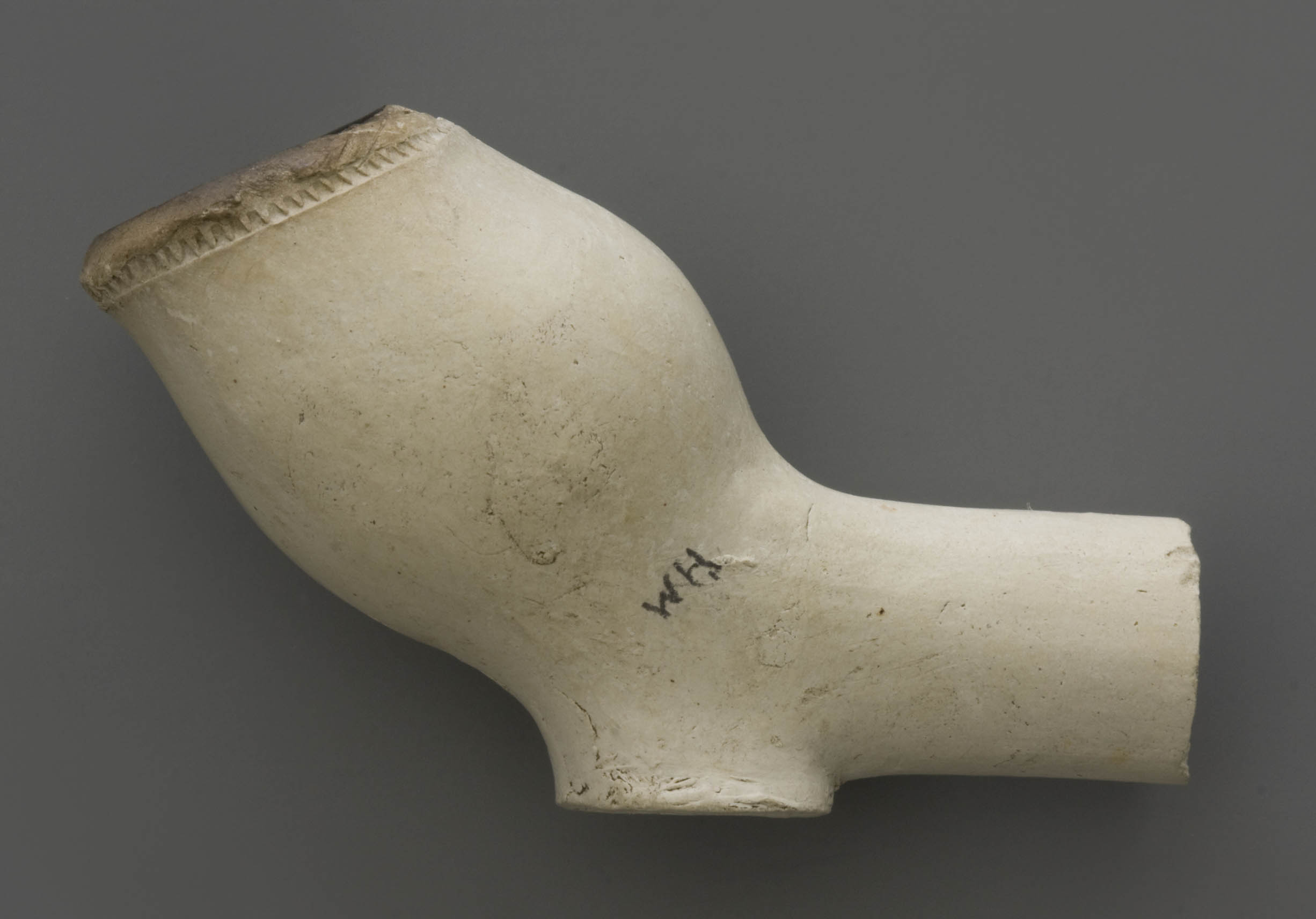
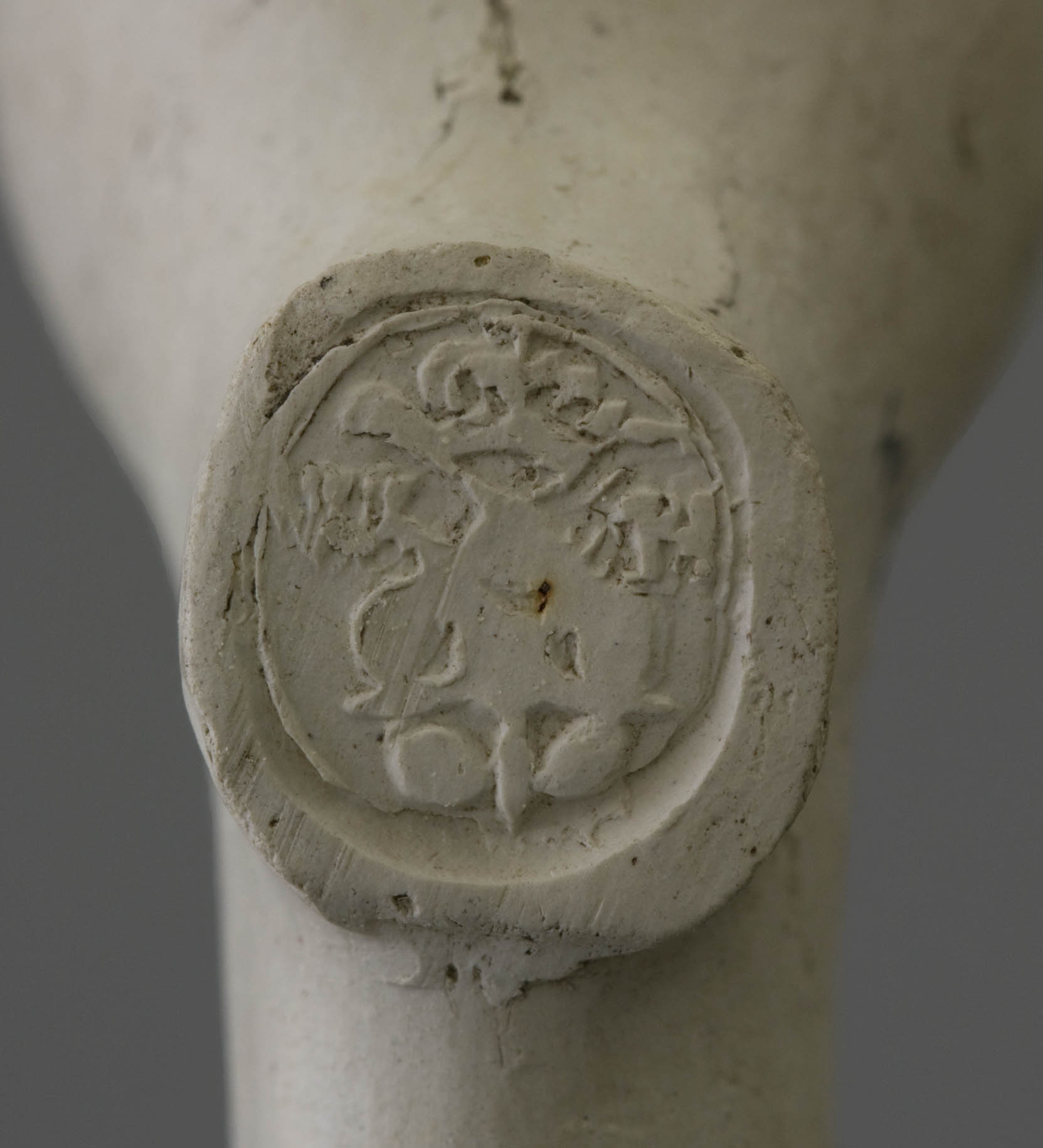
Possibly Heptenstal also provided his pipes with other heel marks.[19] In Amsterdam, for example, the monogram WH appears commonly, which could be his.[20] Furthermore, pipes with a crowned rose are known that can be attributed to him (Fig. 10). Finally, his assortment also fits well with an unmarked product, of which in Amsterdam, between 1650 and 1670, ample examples were made. However, among these finds there are no pipes that show a similarity with the marked pipes of Heptenstal.
While pipes can be attributed with a high degree of certainty to the company of Willem Hendricksz. Heptenstal, this does not apply for the pottery. The production of one and the other workshop is too much alike. Nevertheless, occasionally earthenware has been attributed to Heptenstal.[21] In 1968 a series of syrup jugs were dredged up from the Prinsengracht near the Reesluis.[22] These are jugs with clear baking faults, intentionally dumped at that time . They are defaults showing, for example, the ear pressed into the jug or the bottom cracked so that it was leaking. These products must have been produced by the Heptenstal workers.
Epilogue
Although quite a lot of archival information is known about the person Willem Hendricksz. Heptenstal, it is still difficult to sketch an image of his life and work. Thanks to the various deeds in which he appears, we know that he changed his address at least three times and married four times. As an immigrant he seems very successful in his social career. After working as a tin smith for a period of time, he takes up pipe making. He brings it to an independent workshop with its own makers mark that became in demand in Amsterdam. He then extends this business with a potters workshop, perhaps initially only intended for baking his own clay pipes. Gradually the production of ceramics seems to take the lead. That is understandable, because the sales of clay pipes declined from 1650 onwards: the quality clay pipe from Gouda pushed the relatively simple Amsterdam product from the market.
It is difficult to get a reliable picture of the size of his workshops. Heptenstal probably rented a building at first, which he later he bought. Much is also unclear about his pottery factory. For example, there is doubt as to whether he ran two potteries at one point in time or whether he exchanged one for the other. In the most positive case, he even led three different companies for a short time. Just as we might expect of a good entrepreneur he moved from small to larger and eventually managed to run a combined company of considerable size. By uniting the old pipe factory with the pottery business and in addition buying the adjoining houses, his factory grew steadily.
Just as we know little about his company, it also remains shadowy what his personal status has been. Based on his professional mentions, he became a potter after being pipe maker, eventually to be called a master potter. In the latter description, we can read his status as an entrepreneur . From a day labourer or journeyman he gradually became an employer in a company that represented fair value. This meant that that he no longer participated in the production process himself. In the end he was the owner of the company and his job was purely in the business: organizing the production, arranging orders and selling the products. All this show that he seems to have gone well economically. Whether that ultimately gave him the right feeling of happiness that a hard working person is entitled to, is hard to say.
As a matter of fact, Heptenstal had a productive and long life. Dying of old age at seventy, he was married four times, not uncommon in the seventeenth century. The first marriage lasted only a few years. The two following marriages lasted fifteen to twenty years. The final marriage ended after a year because of his death. Initially he will have run his workshop at home together with his wife . Later he will have lived in the house at the pottery, but in the end he has done well and the household moved to an independent residence. His last address was on the Passeerdersgracht, still around the corner of his factories.
However, it must be possible to further concretize the person Willem Hendricksz. By searching for information on all the persons that are in one way or the other related to Heptenstal, new information will certainly come up. Also deeper archival research on Willem Hendricksz. himself will undoubtedly bring up further information. Unfortunately, this is a task that requires dozens of hours of archival work with no guaranteed outcome . That is why other research projects take precedence over this assignment. But still, there is a nice task for the enthusiast.
© Don Duco, Pijpenkabinet Foundation, Leiden – the Netherlands, 1992.
Illustrations
- Dish in red backing river clay covered on the use side with yellow tinted lead glaze. Amsterdam, Willem Hendricksz. Heptenstal?, 1635-1650.
Leiden, Pijpenkabinet collections Pk 767
- Tobacco pipe with bi-conical bowl, heel and straight stem. Milling. Heel mark rose with trapezoidal leaves. Stem centre of gravity six stamps of a lily in lozenge. Amsterdam, Willem Hendricksz. Heptenstal, 1635-1645.
Leiden, Pijpenkabinet collections Pk 1.851
- Tobacco pipe with slender bi-conical bowl, heel and straight stem. Milling. Heel mark rose with trapezoidal leaves. Stem undecorated. Amsterdam, Willem Hendricksz. Heptenstal, 1640-1660.
Leiden, Pijpenkabinet collections Pk 7.466
- Tobacco pipe with bi-conical bowl, heel and straight stem. Milling. Heel mark rose with trapezoidal leaves. Stem millings to camouflage an unevenness. Amsterdam, Willem Hendricksz. Heptenstal, 1640-1650.
Leiden, Pijpenkabinet collections Pk 2.291
- Tobacco pipe with bi-conical bowl, heel and straight stem. Milling. Heel mark rose with trapezoidal leaves. Stem embossed a stylized rose between geometrical bands, near the bowl initials W and H. Amsterdam, Willem Hendricksz. Heptenstal, 1640-1655.Leiden, Pijpenkabinet collections Pk 1.372
- Tobacco pipe with bi-conical bowl, heel and straight stem. Milling. Heel mark rose with trapezoidal leaves. Stem undecorated. Amsterdam, Willem Hendricksz. Heptenstal, 1640-1660.
Leiden, Pijpenkabinet collections Pk 2.357a
- Tobacco pipe with bi-conical bowl, heel and straight stem. Milling. Heel mark rose with trapezoidal leaves. Stem centre of gravity four lozenges filled with a lily. Amsterdam, Willem Hendricksz. Heptenstal, 1640-1665.
Leiden, Pijpenkabinet collections Pk 2.344
- Tobacco pipe with bi-conical bowl, heel and straight stem. Milling. Heel mark rose with trapezoidal leaves. Stem centre of gravity stamps with unusual geometrical pattern of five dots with lines between them. Amsterdam, Willem Hendricksz. Heptenstal, 1640-1670.
Leiden, Pijpenkabinet collections Pk 2.353
- Tobacco pipe with slender bi-conical bowl, heel and straight stem. Milling. Heel mark rose with trapezoidal leaves. Stem top embossed floral decoration ending in a lily shape near the bowl and a diamond shape on the side of the mouthpiece. Amsterdam, Willem Hendricksz. Heptenstal, 1645-1660.
Leiden, Pijpenkabinet collections Pk 7.736
- Tobacco pipe with bi-conical bowl, heel and straight stem. Milling. Heel mark crowned rose with initials WH. Amsterdam, Willem Hendricksz. Heptenstal (attribution.), 1635-1640.
Leiden, Pijpenkabinet collections Pk 1.672
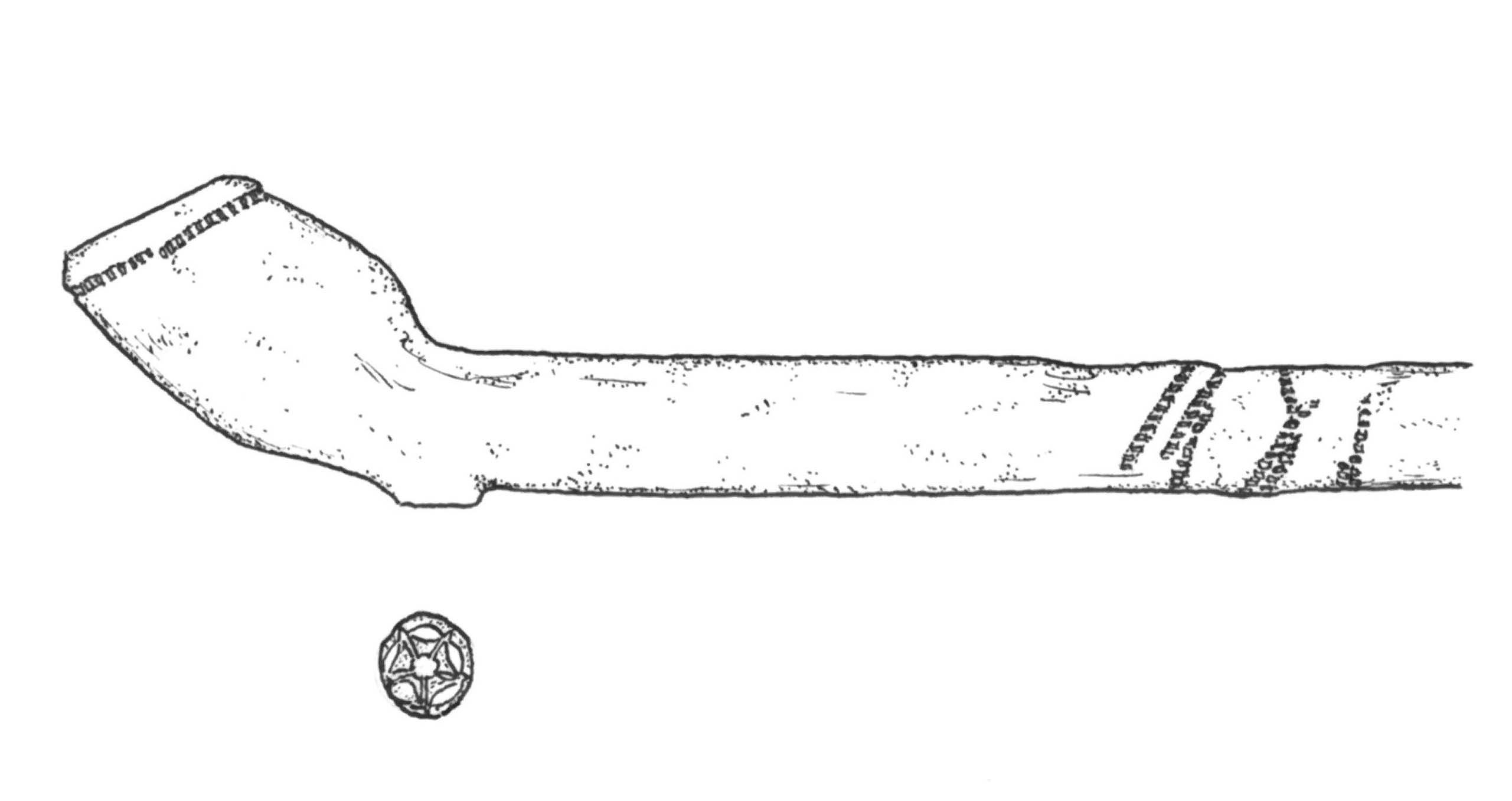
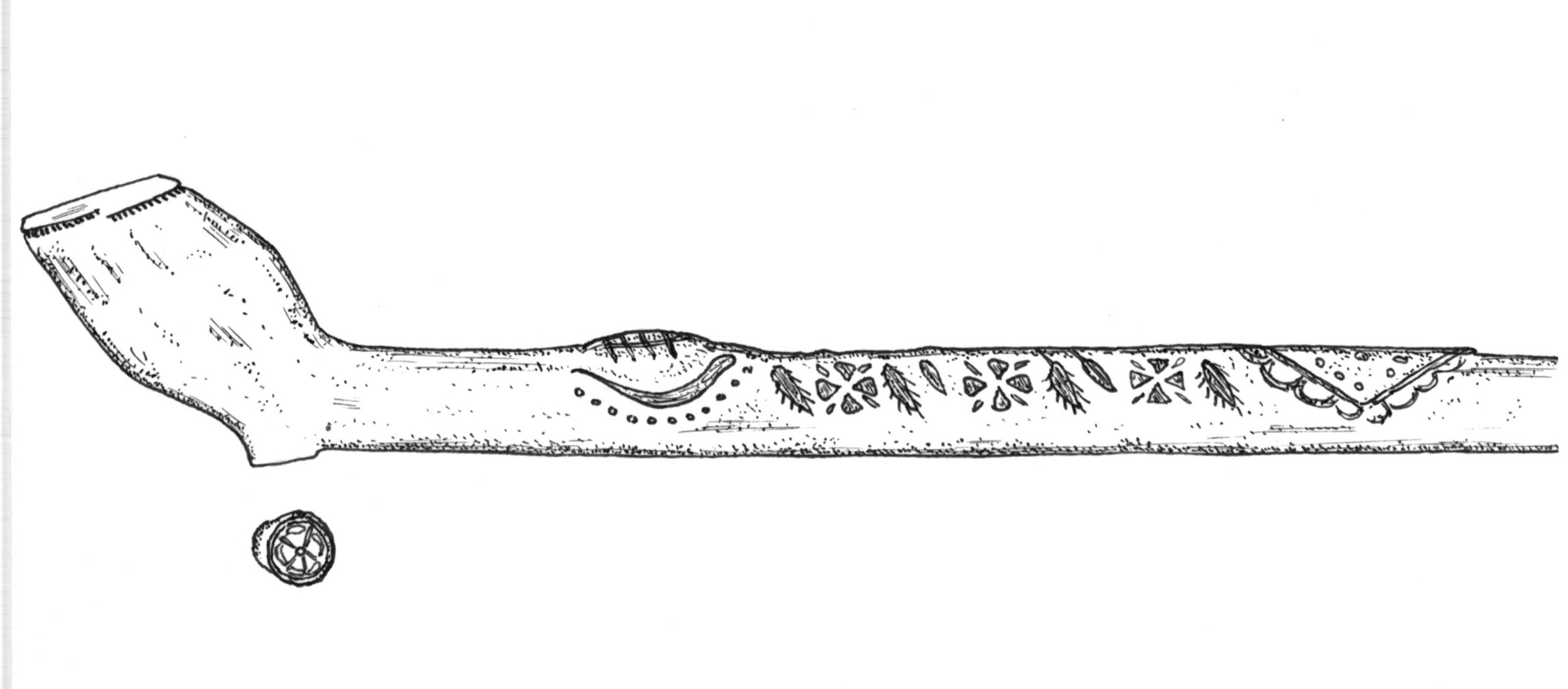
Notes
[1] Don Duco, 'Pijp en tabak in Amsterdam', Nieuwsbulletin Pijpenkamer Icon, I-2, 1975, p 10. D.H. Duco, The Clay Tobacco Pipe in Seventeenth Century Netherlands, Oxford, BAR Int. series 106 (ii), 1981, p 159.
[2] GA (Municipal Archives) Amsterdam, DTB 670/172, Marriage announcement, 27-06-1626.
[3] GA Amsterdam, DTB 436/129, Marriage announcement, 06-09-1630.
[4] GA Amsterdam, ONA notary Verheij, 02-06-1644, published in "Oude papieren" by J.F.M. Sterck, 10e Jaarboek Amstelodamum, p 199. Compared Willem Hendriks, toebackpijpenmaker, old 46 years and Hendrik Claesz. of Rotterdam, plateelbacker in the before mentioned town, aged 36 years, stated by Arie Andriesz. Aerdemeter (clay measurer), to testimony the truth, first the before mentioned Willem Hendrix who declares that for the making of tobacco pipes different types of clay are used like Syberchsche and Frettensche and Suitberchsche clay, all coming from Cologne, also Luycksche and Namensche clay, like also French clay, English from Poole clay and English from the Isle of Wight clay, also Frederichsche clay coming from Munster and last also clay coming from the land of Hesschen, and the before mentioned. Hendrick Claesz. that for the Delftware different clays are used like English clay, Doornichsche (Tournai), Delfts and also a type of black clay named Woerdense (from Woerden) clay. Declaring further that they together and also all other tobacco pipe makers and pottery makers in past and present were served by the clay measurer who has always been acting after the ordinance on the measuring of clay and that he always has been paid, this also concerns the other clay sorts (volaerde) such as English, French and Roozendaelsche (from Rozendaal). Writtten down in Amsterdam in presence of Jacobus Veen and Nicolaas van Hoorn, on June 2 1644. Also mentioned in: F.G.M. Douwes, 'Oude toebackpijpjes in Amsterdam', Maandblad Ons Amsterdam, XVI-12, 1964, p 365.
[5] GA Amsterdam, DTB 465/78, Marriage announcement, 23-08-1647. Compared as before Willem Hendrix (William Hendreckson) of Stoock (Warwickshire), potter, widower of Aeltie Barents, living Lijnbaensgracht and Neeltje Michiels of A(msterdam), widow of Gerrit Jacobsz..
[6] GA Amsterdam, DTB 465/381, Marriage announcement, 05-03-1648. Compared as forward Michiel Tijsbaert from Gent, potter’s companion, assisted with Willem Heijndrixs his master, living in Passeerderstraat and Harmtie Claes, etc.
[7] GA Amsterdam, DTB 473/132, Marriage announcement, 11-04-1654. Compared as before Teunis Martens of Utrecht, potter’s companion, old 26 years, living Looiersgracht, assisted with Willem Hendricksen and Annetie Pieters etc.
[8] GA Amsterdam, DTB 473/493, Marriage announcement, 17-10-1654. Compared as before Jacob Cornelisse of Gorcum, potter, widower of Grietje Willems on Baengraft, assisted with Willem Hendrixs and Anna Hendrix, 22 years, assisted with her mother Annetje Jans on Louriergracht.
[9] GA Amsterdam, DTB 482/539, Marriage announcement, 08-03-1662. Gillis Marinus from Bergen op Zoom, potter, 22 years, assisted with Willem Hendricxsz. on Baengracht and Tietje Alders.
[10] GA Amsterdam, ONA 2198, fol 491, notary Adriaen Lock, 22-04-1655. Waves on the 22 April anno 1655 for me Adriaen Lock, civil law notary in attendance of Willem Hendrixs. Touback(tobacco) pipe maker and potter living within this town, about 57 years and has stated under presence of oath on request of Evert Bird, also toubackpijpemaecker (tobacco pipe maker) that it is true that now about eight days ago, having withheld the precise day, came to him, Walewijn van der Veen who presented him for sale a quantity of clay he was expecting. He told that he had bought a batch of hundreds of tons from him, attending the before mentioned Van der Veen gave him a tobacco pipe which was made from the same Hessian clay, stating that the quantity he had was as good as the clay of the before mentioned tobacco pipe was, that also the giver of the before mentioned Van der Veen did not want to buy before he had checked the clay whether it was good, Van der Veen left and never delivered the sample for test, he however received thirty nine barrels from Van der Veen and he found out that this clay was not from Hessen and that it is from a bad quality so Walewijn van de Veer should state that the delivery was the right Hessens clay and that he does not have brought in any other clay to him as the hundred and nine and thirty barrels. Arnout Paard, Dolf Pillenbergh, William Hendrecks, P. Lock.
[11] GA Amsterdam, Kwijtschelding (Remission) 2B (46), fol 233, 13-05-1655. Abr. Anthonisz., Pottery with house on Lijnbaansgracht to Willem Hendricksz., sugar pot maker (suikerpottenbakker), loins are the heirs on the Looiersgracht on the north side. The pottery is located on the corner of Passeerdersstraat.
[12] Filips von Zesen, Beschreibung der Stadt Amsterdam (Designation of the City Amsterdam), Amsterdam, 1664, pp. 285-286.
[13] GA Amsterdam, Kwijtschelding (Remission) 2H (51), fol 22v, 08-05-1660. Jan Cornelisz., ship carpenter and by last will of Ralf Pieter Franse, house carpenter asked guardian of his comparants unmarried daughter named Dircks Jans sells to Willen Hendrixsz. Heptenstal, master potter house and yard on Lijnbaansgracht south side.
[14] GA Amsterdam, Executie Kwijtschelding (Execution Waiver), 2170, fol 282v, fol 119v, 26-01-1669. We know that on the 26th of January 1669 at the execution of this city is sold to Salomon du Plouis a house and yard with a stable, located on Baengraft, between Loijersgraft and Passeerderstraet wide in the street about 25 feet and deep about 19 feet, now calling from Barent Florisz., sailor and to the north Abram Anserinisz. from the street to the back of the pipe factory of Hijpenstal. Furthermore, in all the house and yard belonged to Geertruijd Middelhoven widow and owner of Pieter Mortier for ƒ 1710 the before mentioned Salomon du Plouis brought up. etc. 23 Mai 1669.
[15] GA Amsterdam, DTB 493/252, Marriage announcement, 13-04-1669. Appeared as before Willem Hendricxsz. of Stoock, potter, widower of Neeltje Michiels on Passeerdersgracht and Trijntje Alberts of A(msterdam). widow of Daniel Roos on Looiersgracht.
[16] GA Amsterdam, Executie Kwijtschelding (Execution Waiver), RA 2171, fol 65, 08-06-1673. Sold to Pieter de Loo a house and pottery and clay-booties and still a small lottery and inherit on the card situated nr 3 on the Baengracht, Samuel de la Nay, behind wed. Jan Danielsz. failed this plot at Willem Hendriks Heptenstal. On 21 February 1670 the plot reported approached by Mr. Lucas Occo.
[17] Sales and moving assignments from the same pottery / pipe maker are found in the years 1698, 1699, 1702, 1708, 1709, etc.
[18] Don Duco, 'Roosmerken met trapeziumvormige blaadjes' ('Rose marks with trapezoidal leaves’), Pijpelijntjes, V-3, 1979, pp. 7-8. (Describes rose marks manufactured by Willem Heptenstal.)
[19] D.H. Duco, De Nederlandse kleipijp, handboek voor dateren en determineren, Leiden, 1987, p 73. We repeatedly see that different marks are being put in one company, while there are several mark stamps of each type. For example, we distinguish from the Willem Heptenstal company in Amsterdam more than ten similar rose brands (35, 424), while also using different initials WH.
[20] These products should date from the beginning of his career.
[21] Don Duco, 'Een Amsterdamse pijpmaker-pottenbakker', Het Profiel, 1979/1980, no. 4, pp. 5-7. Including the illustration of a jug possibly produced by Willem Hendreckson Heptenstal.
[22] H.A. Heidinga, ‘Aardewerkvondst uit Prinsengracht, misbaksels van Amsterdammertjes’, Ons Amsterdam, XXI-6, June 1969, pp. 174-185.